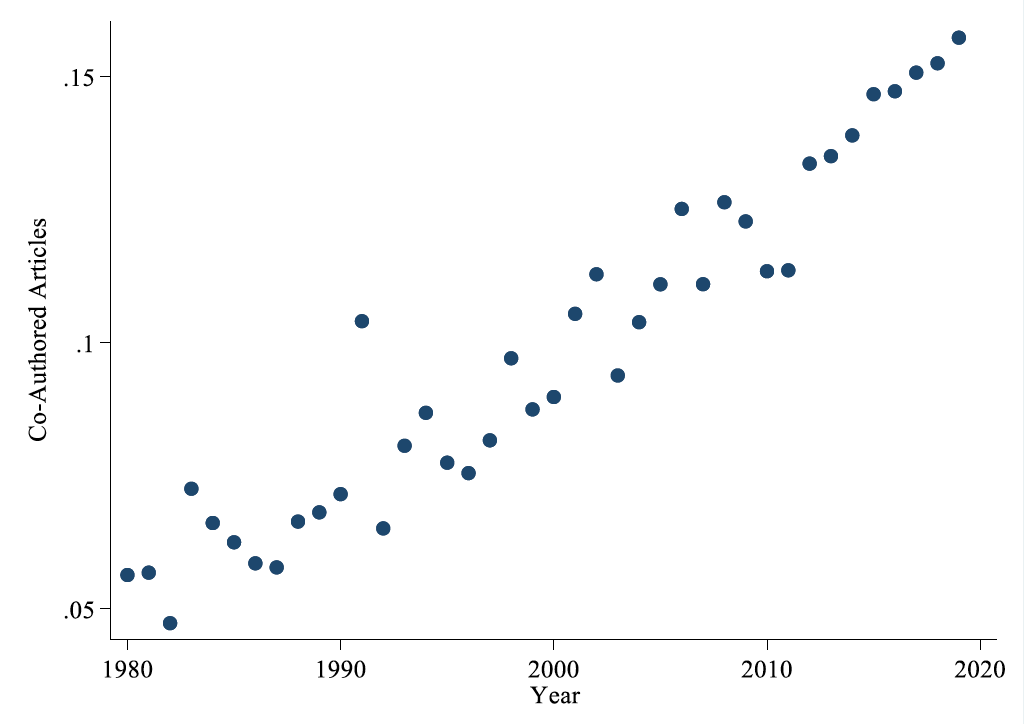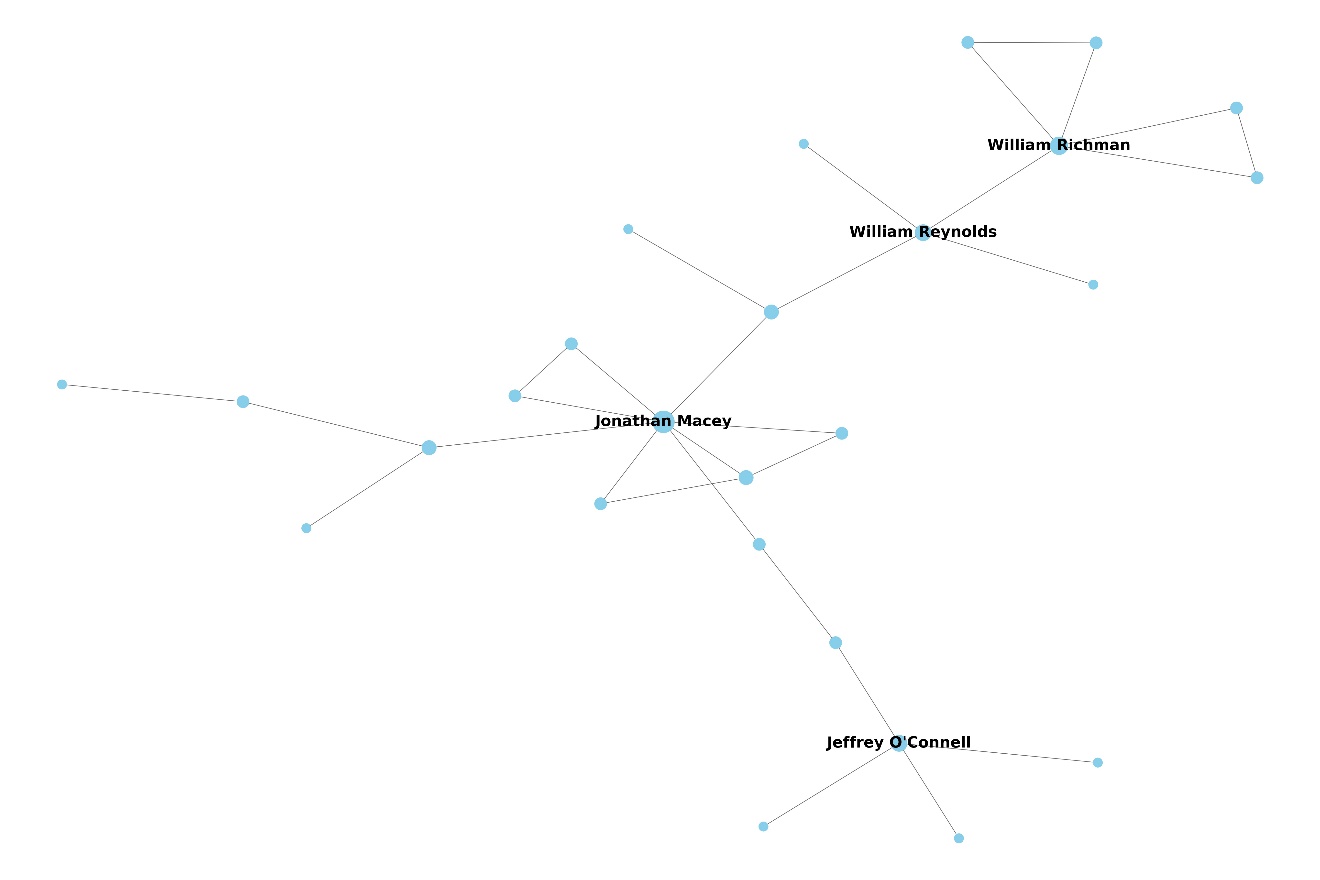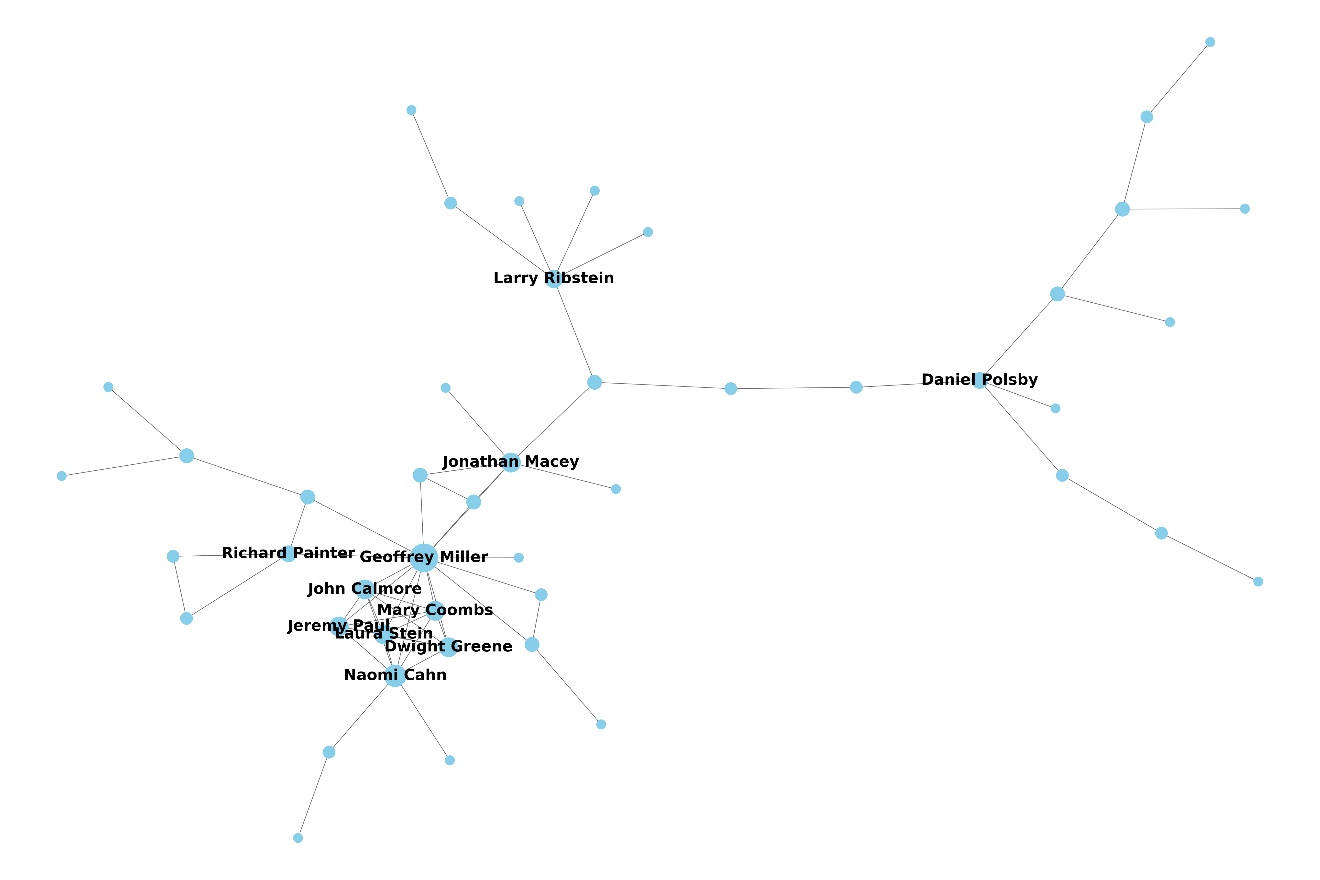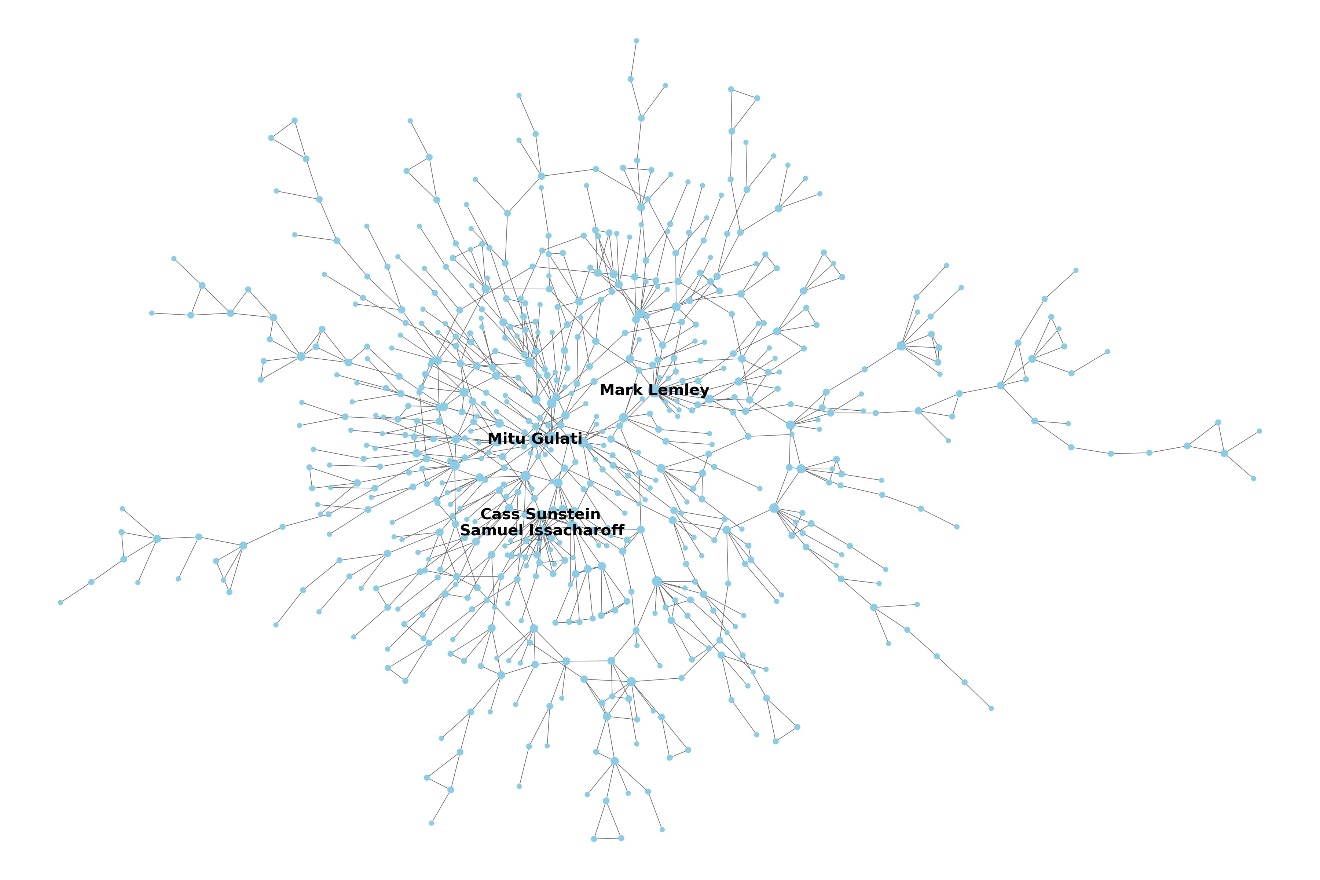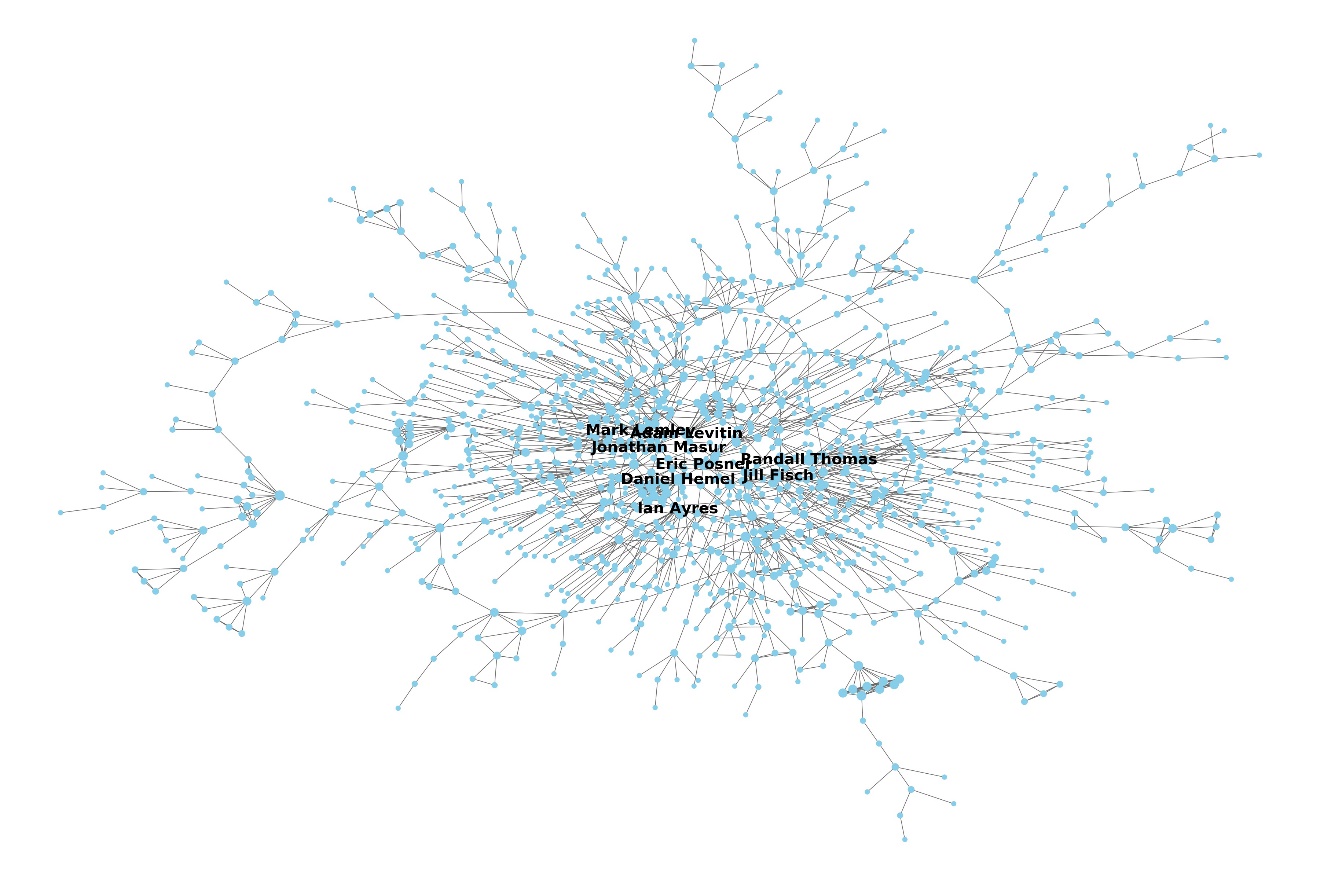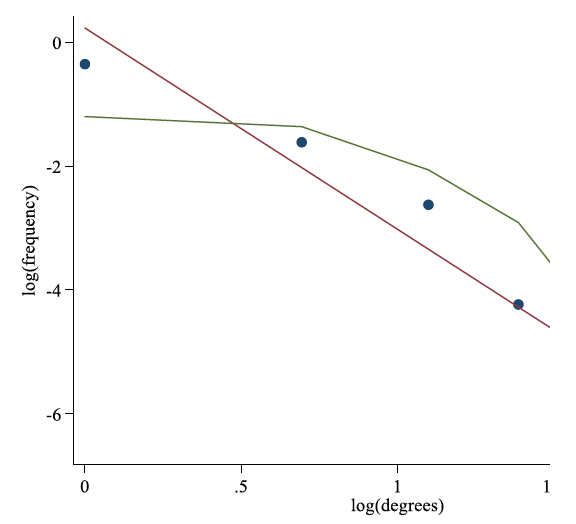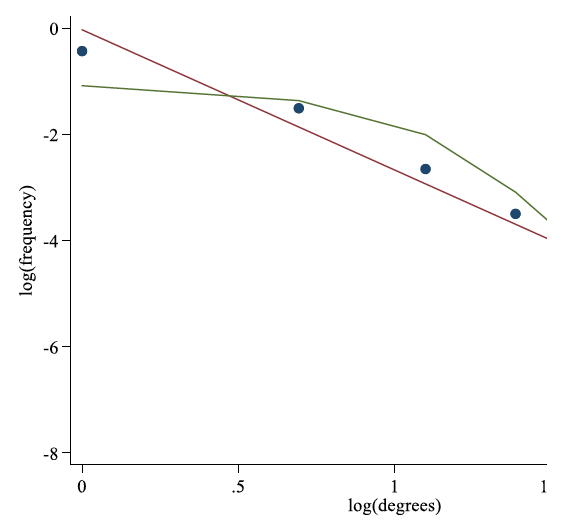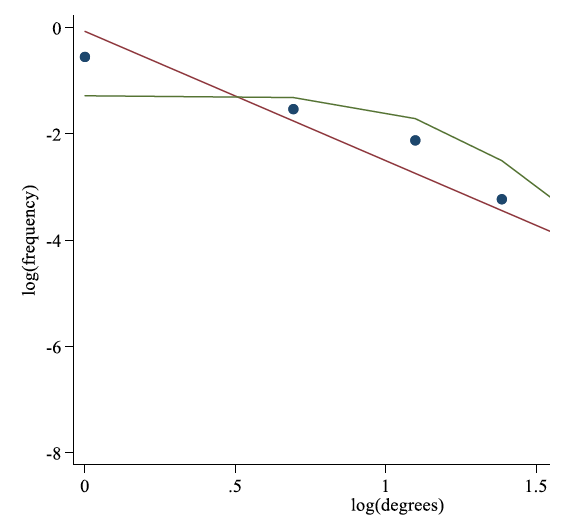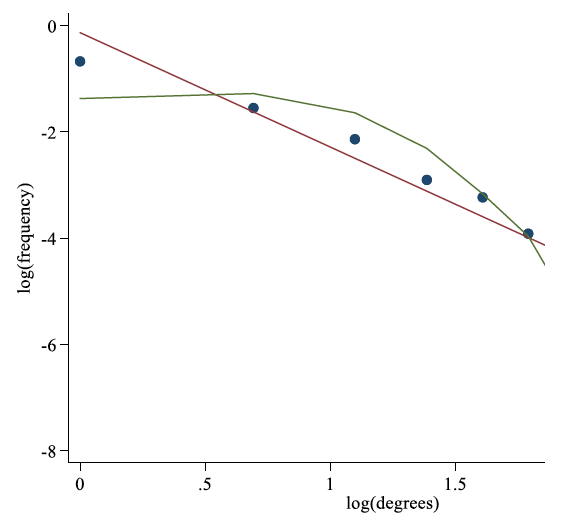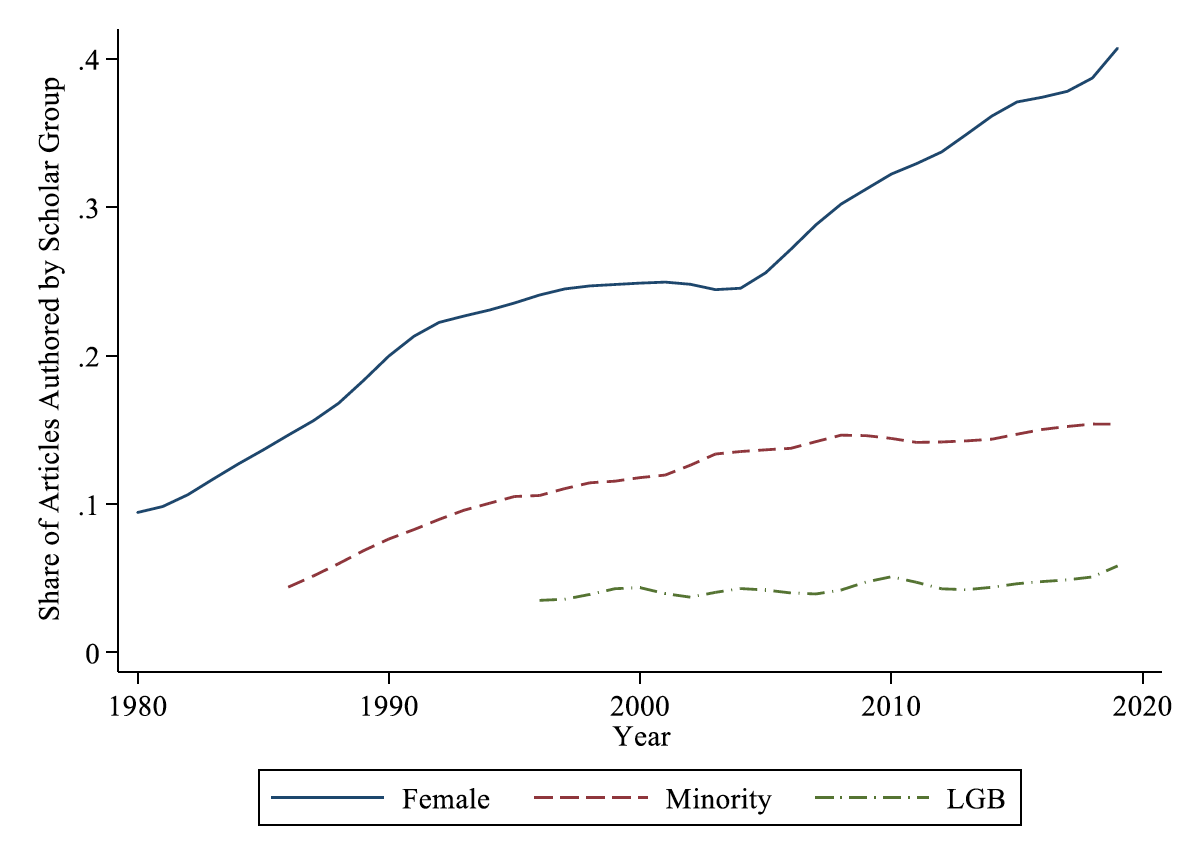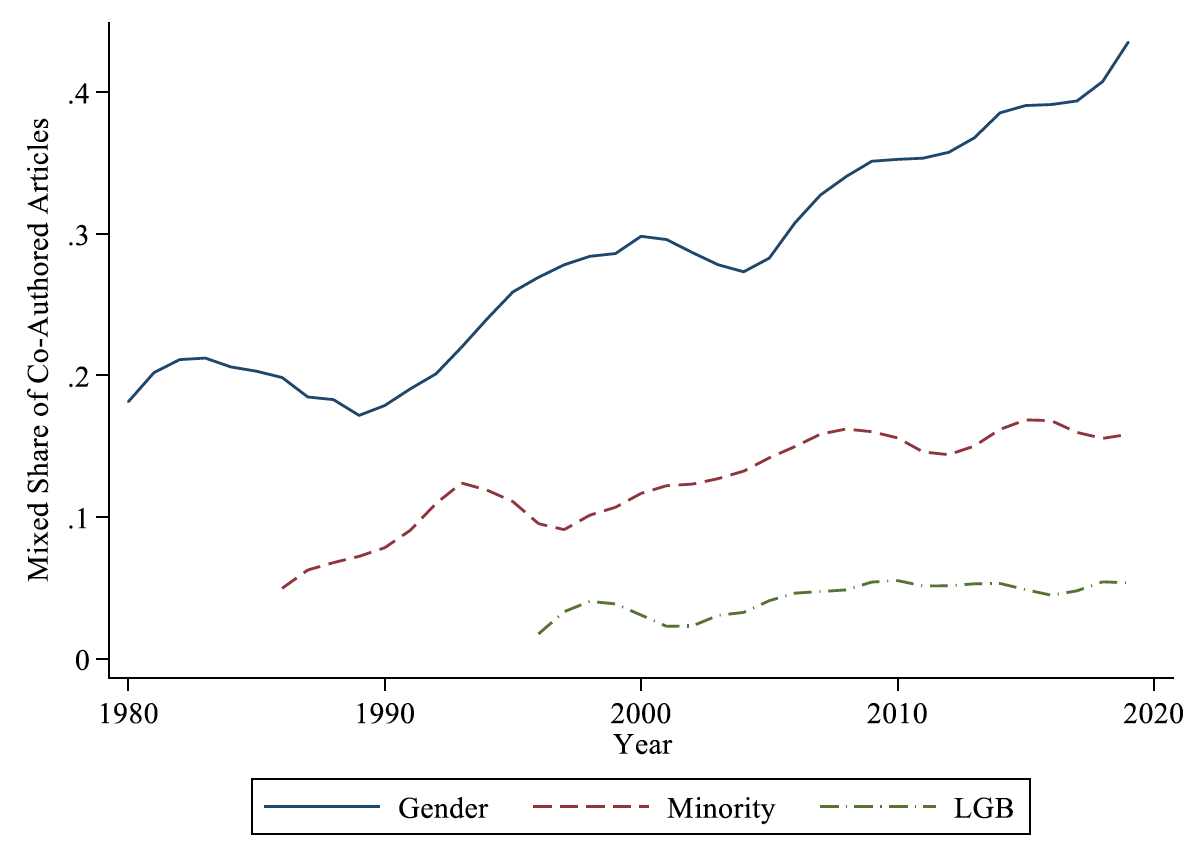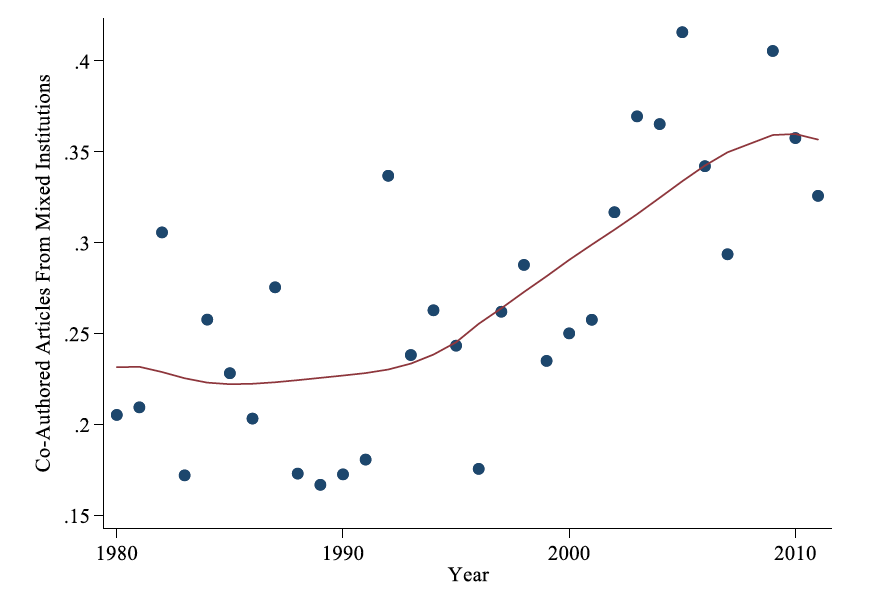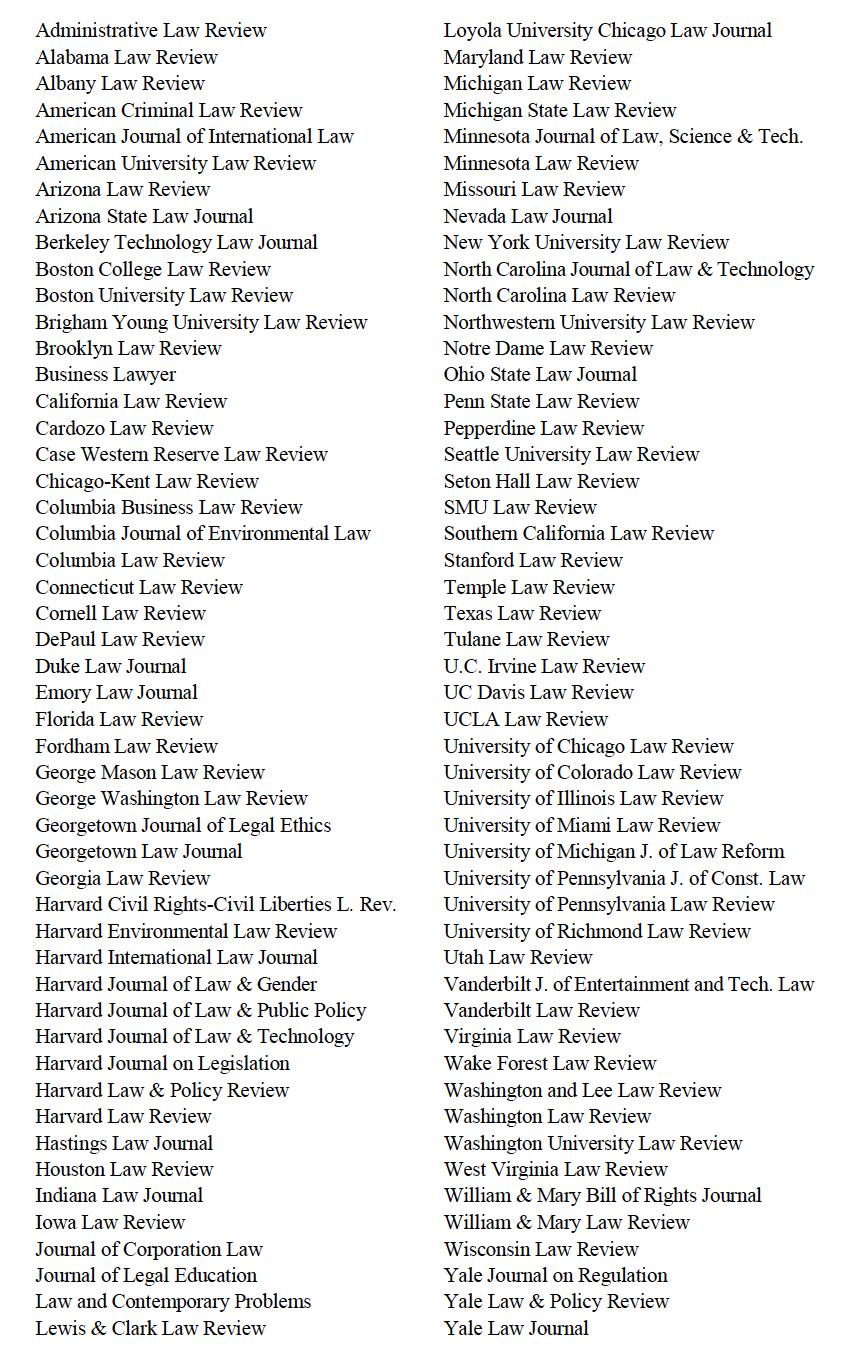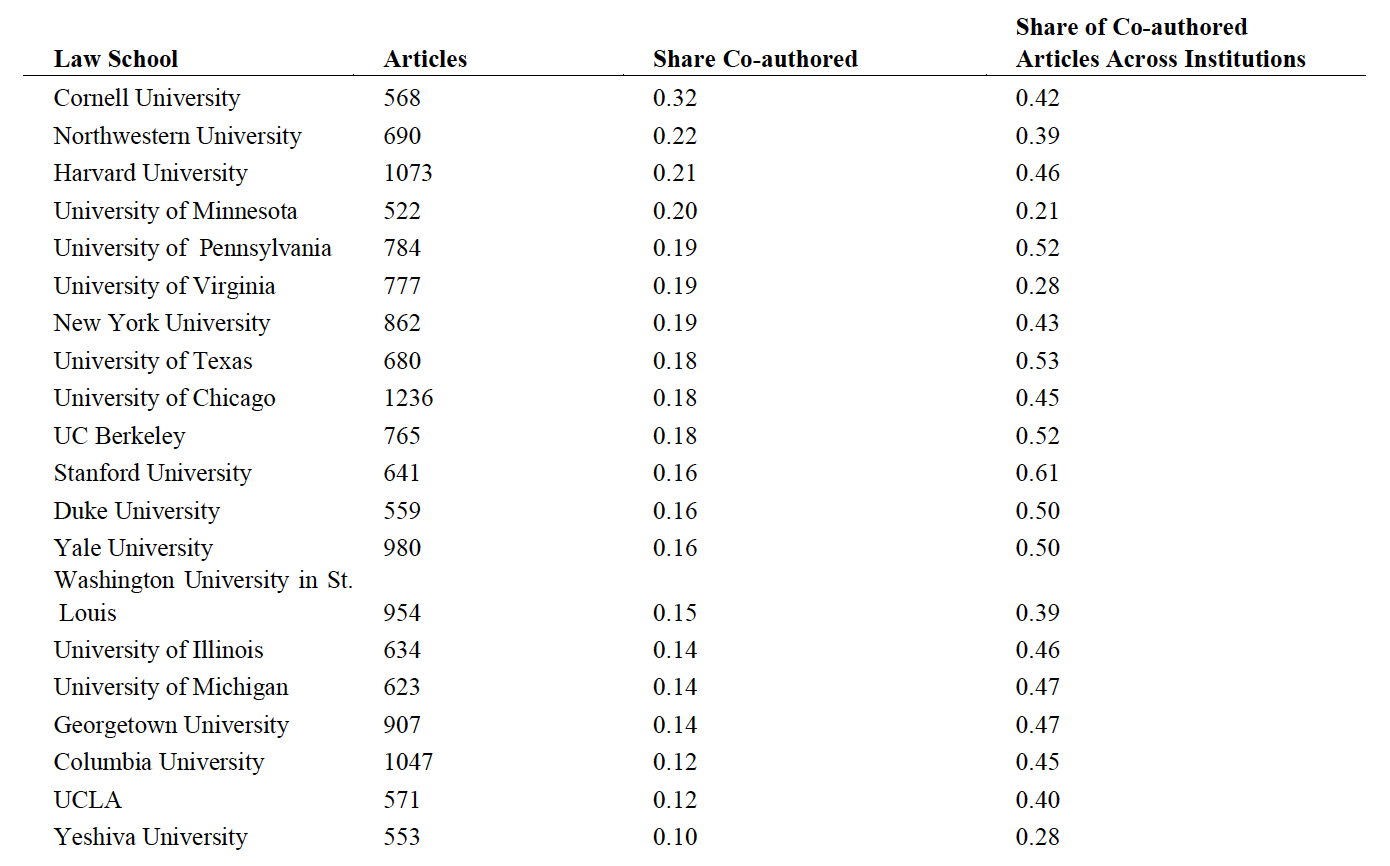Introduction
In June, when the Supreme Court issued its decision in Dobbs v. Jackson Women’s Health Organization holding that there was no constitutional right to an abortion, the Court was hasty to disavow any likely political consequences. “We do not pretend to know,” wrote Justice Alito, “how our political system or society will respond to today’s decision overruling Roe and Casey.”1 1.Dobbs v. Jackson Women’s Health Org., 142 S. Ct. 2228, 2279 (2022).Show More
Well, now we know. The evisceration of the constitutional right to reproductive self-determination has ignited an arms race in conservative states to see which can erect the most intransigent, punitive, and absolute bans against abortion. Seemingly overnight, laws criminalizing abortion were unveiled in nearly half the states, some banning abortion from the moment of conception, some threatening providers with prison sentences of up to ninety-nine years, many eschewing exceptions for cases of rape or incest.2 2.Sophie Putka & Amanda D’Ambrosio, Interactive Map: Abortion Bans and Penalties, MedPage Today (Sept. 19, 2022), https://www.medpagetoday.com/special-reports/exclusives/99466 [https://perma.cc/4E9W-GPJP].Show More
One of the most striking things about these laws is their single-minded focus on the protection of fetal life to the exclusion of all other considerations. But life has never been an absolute value in our legal tradition. The common law doctrines foundational to American law would ordinarily allow women to terminate their pregnancies, as Anita Bernstein has pointed out.3 3.Anita Bernstein, The Common Law Inside the Female Body 6 (2019).Show More Whether looking at tort principles or criminal law principles, an individual has always been found to have the right of self-defense, the right to enjoy his castle, and the right to exclude others. Nor is there any principle that requires help or favors to another, even if the benefit would be great and the inconvenience minimal.
Some commentators, Bernstein included, have suggested that this reluctance to conceive of pregnant women as having the ordinary common law rights accorded to people in general suggests that women4 4.My use of the term “women” to refer to people born with wombs does not arise out of any disrespect towards non-binary people, trans men, or anyone else who might become pregnant, but simply because it follows from the historical arguments I am referencing. In other words, I am talking about “women” as a historically disadvantaged group. I do not mean to exclude anybody.Show More are treated as second-class citizens. This Essay argues that the disadvantage is more specific than that—that these laws impose a burden on the twin facts of being female and pregnant. The condition of pregnancy thus becomes a disability imposed by law on a particular stage of a woman’s life. In this way, what these restrictions resemble most is the common law doctrine of coverture.
Coverture was a marriage doctrine that originated in England during the Middle Ages and was imported to the colonies.5 5.See Norma Basch, In the Eyes of the Law: Women, Marriage, and Property in Nineteenth-Century New York 16–17 (1982) (noting that the presumption that “‘in the eyes of the law’ the husband and wife were one person—the husband”—had been operative since the Norman Conquest).Show More Under coverture, free women of status and property had their legal existence subsumed into that of their husband during their marriage.
Allow Sir William Blackstone to explain:
By marriage, the husband and wife are one person in law; that is, the very being or legal existence of the woman is suspended during the marriage, or at least is incorporated and consolidated into that of the husband; under whose wing, protection, and cover, she performs everything; and is therefore called . . . a feme-covert.6 6.William Blackstone, The Commentaries of the Laws of England 418 (Robert Malcolm Kerr, adapter, William Clowes & Sons, 4th ed. 1876).Show More
Practically speaking, this meant that during the existence of the marriage, the woman could not make contracts, dispose of property, or earn income without her husband’s consent. There is a direct parallel in the legal status of pregnant women, who now face a range of disabilities, from not being able to direct the course of their lives to being ineligible to receive treatment for cancer.7 7.See, e.g., Nicole T. Christian & Virginia F. Borges, What Dobbs Means for Patients with Breast Cancer, 387 New Eng. J. Med. 765, 765 (Aug. 27, 2022), https://www.nejm.org/action/showPdf?downloadfile=showPdf&doi=10.1056/NEJMp2209249&loaded=true [https://perma.cc/LPF9-LS5M] (observing that after Dobbs, some patients “will be forced to carry a high-risk pregnancy and will have limited choices for treating their cancer. Making this compromise could result in worse oncologic outcomes and a greater risk of death for these patients—risks that apply to pregnant patients with any type of cancer”).Show More But instead of their legal existence being “covered” by their husband, it is now covered by the unborn child they carry, in whatever stage of development.
Effectively, fetal coverture doctrine holds that:
By [pregnancy], the [unborn] and [host woman] are one person in law; that is, the very being or legal existence of the woman is suspended during the [pregnancy], or at least is incorporated and consolidated into that of the [unborn]; under whose [cover] she performs everything; and is therefore called . . . a [feme-pregnant].8 8.Blackstone, supra note 6, at 418.Show More
Common law coverture imposed legal disabilities on married women but was justified as being advantageous to her in that her husband was expected to provide material and legal protection. There were also attempts to ameliorate these disabilities through courts of equity.9 9.See Basch, supra note 5, at 70–72 (describing how the economic disabilities of coverture in nineteenth-century America could be set aside through private contracts, including trusts, antenuptial agreements, and settlements.).Show More Fetal coverture doesn’t even provide the contractual benefits that marital coverture did. Far from sheltering a woman from certain liabilities, it opens up a whole new world of health risks and legal peril, dovetailing with an idea that, while all life is sacred, some lives are more sacred than others.
Just as marital coverture merged the identity of the woman into that of her husband, leaving only one person standing—the man10 10.For one of many formulations of this point, see, e.g., United States v. Yazell, 382 U.S. 341, 361 (1966) (Black, J., dissenting) (observing that coverture “rests on the old common-law fiction that the husband and wife are one . . . [which] has worked out in reality to mean that . . . the one is the husband”).Show More—so fetal coverture merges the identity of the woman into that of her fetus.11 11.See Maggie Koerth & Amelia Thompson-Deveaux, Even Exceptions to Abortion Bans Pit a Mother’s Life Against Doctors’ Fears, FiveThirtyEight (June 30, 2022), https://fivethirtyeight.com/features/even-exceptions-to-abortion-bans-pit-a-mothers-life-against-doctors-fears/ [https://perma.cc/M42U-TEPW] (describing a woman with a life-threatening infection in her optic nerve who was denied treatment, even diagnostic tests, due to her pregnancy). The woman, who was eventually able to obtain an abortion, concluded, “It was just abundantly clear to me that everyone was prioritizing this eight-week embryo over me.” Id.Show More
Like a pregnancy, this paper proceeds in three parts. Part I reviews the barrage of new state laws restricting abortion, in some cases prohibiting it entirely, and imposing increasingly draconian penalties for its performance. Part II considers and rejects the rationale that these laws merely seek to preserve life. Our common law is full of situations in which one person has the right to take another’s life to protect themselves or their property, and people are under no obligation to provide gratuitous aid. In fact, Part III argues, these laws restricting abortion, far from enshrining a principle about the sanctity of life, simply set up a hierarchy of interests. Under this hierarchy, the interest of the unborn, except in the gravest extremity—which is still subject to interpretation or whim—trumps that of the woman. This is coverture for the 21st century.
I. A Frenzy of Prohibition
Since the Dobbs opinion was issued, there has been a frenzy of legislative activity as states scramble to promulgate new laws or revive old laws banning abortion.12 12.See Putka & D’Ambrosio, supra note 2.Show More Many states are now staging grounds for a cacophony of overlapping statutes. Nineteenth-century prohibitions have been exhumed and revived.13 13.See Gillian Brockell, States May Revive Abortion Laws From a Time When Women Couldn’t Vote, Wash. Post (July 31, 2022), https://www.washingtonpost.com/history/2022/07/31/abortion-laws-womens-rights/ [https://perma.cc/M3L7-W52A]. West Virginia, for example, is attempting to resurrect an abortion ban from 1849, before West Virginia was even an independent state. See Off. of Att’y Gen. of W. Va., Memorandum Concerning the Effects of Dobbs v. Jackson Women’s Health Org. (June 29, 2022), https://ago.wv.gov/Documents/Final%20Dobbs%20Memorandum.pdf [https://perma.cc/NY66-HQ88] (calling for the enforcement of W. Va. Code § 61-2-8, which classifies abortion as a felony punishable by three to ten years imprisonment and “covers persons who perform abortions and, at least arguably, women who seek them”).Show More Laws passed in the last several years, with the explicit aim of challenging Roe v. Wade, compete with trigger laws that were to go into effect upon Roe’s reversal. Finally, there is the advent of post-Dobbs laws hastily taking advantage of the new anti-abortion freedom, unfettered by any concerns about women’s constitutional rights. Texas, for example, can now enforce a 1925 law that bans abortions entirely,14 14.See Zach Despart, Texas Can Enforce 1925 Abortion Ban, State Supreme Court Says, Tex. Trib. (July 2, 2022), https://www.texastribune.org/2022/07/02/texas-abortion-1925-ban-supreme-court/ [https://perma.cc/K9W5-ZDFV].Show More a recent pre-Dobbs law outlawing abortions after six weeks, before most people even know they’re pregnant, and a new, even more draconian trigger law that bans abortions from the moment of fertilization except in cases to save the life of the mother.15 15.Eleanor Dearman, Here’s How Texas’ Abortion Trigger Law Works, Now that Roe v. Wade Has Been Overturned, Fort Worth Star-Telegram (June 24, 2022), https://www.star-telegram.com/news/state/texas/article262800748.html [https://perma.cc/7KFQ-JBJG].Show More
One thing is clear though: the prohibitions are becoming increasingly extreme, protecting the unborn at earlier and earlier stages of development, ratcheting up criminal penalties for violators, and choking off nearly all exceptions.
A. The Shape of New Laws
While at common law, abortion was not prohibited before “quickening,”16 16.Joanna L. Grossman, Women Are (Allegedly) People Too, 114 Nw. U. L. Rev. Online 149, 152 (2019).Show More and under Roe, the line was drawn at viability, the line of prohibition is now drawn at ever earlier stages of development. Laws that used to prohibit abortion after viability have been superseded by “heartbeat bills,” and those have been superseded in favor of bills forbidding abortion from fertilization on—before the presumptively fertilized egg has even had a chance to implant into the uterus.17 17.See Putka & D’Ambrosio, supra note 2.Show More (How legislatures expect to detect pregnancy at that stage is never explained, but it clearly paves the way for banning of the morning after pill, as well as certain forms of contraception). Under these laws, the entity being protected is not always a fetus or even an embryo that possesses the potential for human life, but an egg that may possibly have been fertilized—the potential of a potential.
Currently, twelve states—Alabama, Arkansas, Idaho, Indiana, Kentucky, Louisiana, Mississippi, Missouri, Oklahoma, South Dakota, Texas, and Wisconsin—have passed laws banning abortion from the moment of conception.18 18.In passing a total ban, Arkansas and Missouri superseded earlier laws banning abortion after twelve and eight weeks, respectively. Id.; Arkansas, Ctr. for Reproductive Rts., https://reproductiverights.org/maps/state/arkansas/#:~:text=Arkansas%20has%20not%20repealed%20other,gestational%20age%2C%20and%20after%20viability [https://perma.cc/655P-DJGB] (last visited Dec. 22, 2022); Gabrielle Hays, Missouri revisits 8-week abortion ban as laws are challenged nationwide, PBS News Hour (Sept. 24, 2021), https://www.pbs.org/newshour/politics/missouri-revisits-8-week-abortion-ban-as-laws-are-challenged-nationwide [https://perma.cc/EK7H-VZCE].Show More An additional five states—Georgia, Iowa, Ohio, South Carolina, and Tennessee—have passed laws banning abortion from six weeks after a person’s last menstrual period.19 19.See Putka & D’Ambrosio, supra note 2.Show More
Hand in hand with these prohibitions are increasingly draconian penalties. Most states that have prohibited abortion have criminalized the procedure, making doctors who perform abortions guilty of felonies carrying sentences of up to two years (South Dakota), up to five years (Kentucky, Idaho, Oklahoma, North Dakota), up to ten years (Arkansas, Louisiana, Mississippi), up to twenty years (Missouri), up to fifteen years (Utah), and up to ninety-nine years years in prison (Alabama, Texas).20 20.See id.Show More Depending on the state, doctors also face fines ranging from $10,000 to $100,000 per incident.21 21.See id.Show More Of these, Texas takes the lead with criminal penalties for abortion providers of up to life or ninety-nine years in prison,22 22.See Tex. Health & Safety Code Ann. § 170A.004 (West 2021) (making the performance of an abortion a criminal offense, which “is a felony of the first degree if an unborn child dies as a result”); Tex. Penal Code Ann. § 12.32 (West 2021) (providing that anyone found guilty of a first-degree felony “shall be punished by imprisonment . . . for life or for any term of not more than 99 years or less than 5 years”).Show More not to mention $100,000 in civil penalties, and civil litigation bounties of at least $10,000 for anyone who wants to sue a provider.23 23.See Tex. Health & Safety Code Ann. § 171.208(b)(2), (3) (West 2021) (providing that a successful claimant will be awarded “statutory damages in an amount of not less than $10,000 for each abortion” as well as costs and attorney’s fees). The Code grants standing to “[a]ny person” who wants to enforce the law. This ban was operative as soon as a fetal heartbeat could be detected. See id. § 171.204.Show More
What is also striking is how many of these bans contain no exceptions for rape or incest survivors,24 24.Elaine Godfrey, The GOP’s Strange Turn Against Rape Exceptions, The Atlantic (May 4, 2022), https://www.theatlantic.com/politics/archive/2022/05/supreme-court-overturn-roe-v-wade-no-rape-incest-exceptions/629747/ [https://perma.cc/8788-BGS4].Show More fetal viability,25 25.See, e.g., Ramon Antonio Vargas, Louisiana Woman Carrying Unviable Fetus Forced to Travel to New York for Abortion, The Guardian (Sep. 14, 2022), https://www.theguardian.com/us-news/2022/sep/14/louisiana-woman-skull-less-fetus-new-york-abortion [https://perma.cc/T7H6-SZRU] (describing how a woman carrying a fetus with no skull was denied an abortion in her home state of Louisiana).Show More or the health of the woman.26 26.See Rebecca Boone & John Hanna, Abortion Bans, With No Exceptions: Republican-Led States Are Preparing for the End of Roe, Chi. Trib. (May 6, 2022), https://www.chicagotribune.com/nation-world/ct-aud-nw-abortion-conservatives-supreme-court-20220506-zdfjswn4cveora32emjhu3m4x4-story.html [https://perma.cc/NJ8P-4JLD].Show More It was not always thus: as Michele Goodwin and Mary Ziegler have observed, “[f]or decades, exceptions to abortion bans for rape and incest were a rare source of consensus.”27 27.Michele Goodwin & Mary Ziegler, Whatever Happened to the Exceptions for Rape and Incest?, The Atlantic (Nov. 29, 2021), https://www.theatlantic.com/ideas/archive/2021/11/abortion-law-exceptions-rape-and-incest/620812/ [https://perma.cc/3HJP-MFRE].Show More No more. Currently, ten states have passed abortion prohibitions with no exceptions for rape and incest: Alabama, Arkansas, Kentucky, Louisiana, Missouri, South Dakota, Tennessee, Texas, West Virginia, and Wisconsin.28 28.Tracking the States Where Abortion Is Now Banned, N.Y. Times (updated Nov. 23, 2022), https://www.nytimes.com/interactive/2022/us/abortion-laws-roe-v-wade.html [https://perma.cc/Z2VY-H3BV]. Mississippi’s ban allows an exception for rape, but not incest. See id.Show More And even in states that have retained rape and incest exceptions, such as Idaho, North Dakota, South Carolina, and Wyoming, abortion providers prepared to take the chance that the exception will rarely be found applicable.29 29.See Megan Messerly, In States That Allow Abortion for Rape and Incest, Finding a Doctor May Prove Impossible, Politico (June 27, 2022), https://www.politico.com/news/2022/06/27/abortion-exceptions-doctor-shortage-00042373 [https://perma.cc/X26Z-NU3K] (quoting an abortion provider saying, “I don’t want to go to jail. I don’t want to break the law,” but with a patient who is pregnant after being raped, having “to say to her, ‘Sorry, you’re on your own.’ It’s just horrific.”).Show More As one article put it, “When it’s not clear what is legal, patients are often treated as though nothing is.”30 30.See Koerth & Thompson-Deveaux, supra note 11.Show More
For now, almost all of the bans allow an exception for abortions necessary to save the life of the mother.31 31.See, e.g., Ala. Code § 26-23H-4 (2021) (making a sole exception to its prohibition on abortion when “necessary in order to prevent a serious health risk to the unborn child’s mother”).Show More But the longevity of even this exception seems to be in question as arguments that “abortion is never medically necessary” gain traction.32 32.See Mary Ziegler, Why Exceptions for the Life of the Mother Have Disappeared, Atlantic (July 25, 2002), https://www.theatlantic.com/ideas/archive/2022/07/abortion-ban-life-of-the-mother-exception/670582/ [https://perma.cc/82CD-696T].Show More In the meantime, as most of the laws on their face do not define what they mean by “life-threatening” or what risks will be considered “serious,” and the consequences for getting it wrong are career-ending, many doctors hesitate to provide care even in emergency situations.
This puts doctors in an impossible position where the law is so unsettled and the penalties for violations are so steep that they fear to trust their own medical judgment.33 33.See Kate Zernike, Medical Impact of Roe Reversal Goes Well Beyond Abortion Clinics, Doctors Say, N.Y. Times (Sept. 10, 2022), https://www.nytimes.com/2022/09/10/us/abortion-bans-medical-care-women.html [https://perma.cc/2ZPZ-AC84] (quoting emergency physician in Houston saying, “We’re no longer basing our judgment on the clinical needs of the woman, we’re basing it on what we understand the legal situation to be.”).Show More In some cases, doctors have been forced to send dangerously ill patients home for fear that the patient might not yet be close enough to death to qualify for an abortion.34 34.See J. David Goodman & Azeen Ghorayshi, Women Face Risks as Doctors Struggle with Medical Exceptions on Abortion, N.Y. Times (July 20, 2022), https://www.nytimes.com/2022/07/20/us/abortion-save-mothers-life.html [https://perma.cc/Z7W6-NUUL].Show More “Do I have to watch the patient bleed to death?” asked one maternal-fetal-medicine physician in Tennessee. “Do I have to call a lawyer before I save her life?”35 35.Jessica Winter, What the “Life of the Mother” Might Mean in a Post-Roe America, New Yorker (May 12, 2022), https://www.newyorker.com/science/annals-of-medicine/what-the-life-of-the-mother-might-mean-in-a-post-roe-america [https://perma.cc/HY8R-DJCP] (quoting Leilah Zahedi, a maternal-fetal-medicine physician in Tennessee).Show More
B. A Grim Future
Most of these laws are the subject of pitched battles in the courts; as a Politico journalist put it, “Abortion laws are changing on a near-daily basis amid a volley of petitions from Republican attorneys general asking courts to allow their state bans to take effect and abortion-rights advocates hoping to have the prohibitions stalled or blocked.”36 36.Megan Messerly, Abortion Laws by State: Legal Status of Abortion Changing Day-by-Day after Roe v. Wade Overturned, Politico (July 6, 2022), https://www.politico.com/news/2022/07/06/abortion-laws-states-roe-overturned-00044127 [https://perma.cc/FBN2-W8L4].Show More
The bans, most of them rushed and poorly considered, seem blinded to any considerations of women’s lives or health.37 37.See, e.g., Vivian Kane, Republican Lawmaker Just Now Realized Abortion Ban He Voted for Has Real-Life Consequences, MSN: The Mary Sue (Aug. 17, 2022), https://www.msn.com/en-us/news/us/republican-lawmaker-just-now-realized-abortion-ban-he-voted-for-has-real-life-consequences/ar-AA10MmSl [https://perma.cc/25VE-TYNE] (describing regret South Carolina legislator expressed after he realized that six-week ban he supported could lead to the death of miscarrying patients). The same lawmaker, Neal Collins, then voted for a ban from fertilization but with a 12-week rape and incest exception, saying that he knew the bill would be taken up by the state Senate. “Hopefully they will have medical expert testimony,” he said. Lydia O’Connor, Lawmaker Horrified by Consequences of Abortion Ban Votes for Even Stricter One, Huffington Post (Aug. 31, 2022), https://www.huffpost.com/entry/neal-collins-south-carolina-abortion-ban_n_630fd8cfe4b0da54bae566ce [https://perma.cc/NT58-LAC4].Show More Most have been drafted without any consultation with the relevant medical bodies or any real investigation of either expected or unexpected consequences.38 38.See, e.g., Christian & Borges, supra note 7, at 767 (opining, as oncologists, that difficult decisions in treatment of pregnant patients with breast cancer “should be informed by physicians’ extensive training and understanding of the scientific literature, and they should be made as part of the meaningful dialogue of a patient–physician relationship. They are not decisions that should be made by the state”); Rita Rubin, How Abortion Bans Could Affect Care for Miscarriage and Infertility, JAMA Network (June 28, 2022), https://jamanetwork.com/journals/jama/fullarticle/2793921 [https://perma.cc/XAH4-AG7J] (quoting OB-Gyn stating that “laws like abortion restrictions and bans are not based in science or evidence”).Show More They are single-minded and single-focused—ban now, and figure out all the details later.
But even these draconian laws are unlikely to represent the final word on prohibition. The anti-abortion movement is nothing if not ambitious, and in some states, legislators are discussing the possibility of laws that would prevent women from traveling to other states to seek abortions,39 39.See Cassidy Morrison, Red States Eye Restrictions on Interstate Travel for Abortion Services, Wash. Exam’r (June 30, 2022), https://www.washingtonexaminer.com/restoring-america/fairness-justice/red-states-eye-restrictions-on-interstate-travel-for-abortion-services [https://perma.cc/96KU-4H4Z] (reporting that “[c]onservative advocacy groups are teaming up with anti-abortion state lawmakers to draft legislation that would put an end to interstate travel for abortions, which could limit the remaining abortion options for women in states with stringent bans”).Show More banning the purchase of abortion drugs over the Internet or through telehealth consultations,40 40.Louisiana has a bill prohibiting abortion medication delivery in-state: “The bill makes it illegal to deliver abortion medication to a state resident ‘by mail-order, courier, or as a result of a sale made via the internet.’” See Is Abortion Illegal in Your State? A Comprehensive Guide, PBS NewsHour (June 25, 2022), https://www.pbs.org/newshour/nation/is-abortion-illegal-in-your-state-a-comprehensive-guide [https://perma.cc/T2KD-MY2F].Show More and limiting the use of the types of contraception that prevent implantation of a fertilized ovum.41 41.Id.Show More
The ultimate goal for the most committed of anti-abortion activists is fetal personhood, the idea that through constitutional amendment or statutes, a fetus (or embryo, or zygote) would have the same rights and privileges as any citizen.42 42.See Mary Ziegler, The Next Step in the Anti-Abortion Playbook Is Becoming Clear, N.Y. Times (Aug. 31, 2022), https://www.nytimes.com/2022/08/31/opinion/abortion-fetal-personhood.html [https://perma.cc/PV7A-YGEK].Show More If fetal personhood bills or constitutional amendments are passed, the likely outcome could be criminal penalties for women who obtain abortions (already contemplated in some quarters) and the narrowing or even abolition of an exception for the life of the mother. Since, at the current time, the arc of the moral universe bends towards extremism, this may be the future.
II. Is It Really About “Life”?
The justification given for the harshness of these bans is that they are in service to a higher principle: the sanctity of life. But this explanation, however lofty, does not wholly withstand scrutiny, both because it is not clear that these laws will result in a net gain of life and because our legal tradition has never considered life to be an inviolable principle.
A. The Empirical Argument
While most of these anti-abortion laws are justified on the basis that they will save lives, they will certainly not save the lives of pregnant women. It is uncontroverted that legal abortion is a very low-risk procedure, with a much lower fatality rate than pregnancy and childbirth, particularly in the United States, which “has the highest maternal mortality rate of all developed countries and is the only industrialized nation with a rising rate.”43 43.Am.’s Health Rankings, Executive Brief, Women and Children’s Health Report 6 (2021), https://assets.americashealthrankings.org/app/uploads/2021_ahr_hwc_executive_brief_final.pdf [https://perma.cc/6SCC-249B]; see also Warren M. Hern, Pregnancy Kills. Abortion Saves Lives, N.Y. Times (May 21, 2019), https://www.nytimes.com/2019/05/21/opinion/alabama-law-abortion.html [https://perma.cc/SFB5-MVVY] (arguing that “[p]regnancy is dangerous; abortion can be lifesaving”).Show More
As the editors of the New England Journal of Medicine (“NEJM”) summarized it: “The latest available U.S. data from the Centers for Disease Control and Prevention and the National Center for Health Statistics are that maternal mortality due to legal induced abortion is 0.41 per 100,000 procedures, as compared with the overall maternal mortality rate of 23.8 per 100,000 live births.”44 44.The Editors, Lawmakers v. The Scientific Realities of Human Reproduction, 387 New Eng. J. Med. 367, 367 (June 24, 2022), https://www.nejm.org/doi/full/10.1056/NEJMe2208288?query=recirc_mostViewed_railB_article [https://perma.cc/2YT6-6MUA].Show More This means that, in the United States, the risk of death from pregnancy and childbirth is literally fifty-eight times higher than from abortion.
It is also not a given that banning abortion will result in a net increase in babies being born. Many women will continue to obtain abortions, just not legally. This will not save any babies and will put a number of women in danger, as “[c]ommon complications of illegal procedures included injury to the reproductive tract requiring surgical repair, induction of infections resulting in infertility, systemic infections, organ failure, and death.”45 45.Id.Show More
Finally, criminalizing abortion procedures will put many women at risk who simply need miscarriage or other medical care. Miscarriages are a common pregnancy complication, affecting 10 to 20 percent of known pregnancies,46 46.See Lara Freidenfelds, The Myth of the Perfect Pregnancy: A History of Miscarriage in America 4–5 (2020).Show More and miscarriage management is often clinically indistinguishable from abortion.47 47.Winter, supra note 35 (explaining that abortion and miscarriage share the same objective of emptying the uterus and “employ the same tools and techniques”).Show More Laws that only make exceptions for the life of the mother or for “severe health risks” have already chilled medical decision-making to the point “where the health and safety of a pregnant person comes second to doctors’ own risks and fears.”48 48.Koerth & Thompson-Deveaux, supra note 11.Show More
A study undertaken by the NEJM of fetal and maternal medicine practitioners in Texas following passage of Senate Bill 8—the law that allowed for civil suits by anyone interested in a $10,000 bounty against abortion providers and anyone who aided an abortion seeker—found that some hospitals “no longer offer[ed] treatment for ectopic pregnancies implanted in cesarean scars,” which can be life-threatening;49 49.Whitney Arey et al., A Preview of the Dangerous Future of Abortion Bans—Texas Senate Bill 8, 387 New Eng. J. Med. 388, 389 (June 22, 2022), https://www.nejm.org/doi/full/10.1056/NEJMp2207423 [https://perma.cc/J3J5-6E3W]. In this paper, researchers interviewed twenty-five clinicians across Texas about how the Senate Bill had “affected their practice in general obstetrics and gynecology, maternal and fetal medicine (MFM), or genetic counseling” as well as twenty patients with medically complex pregnancies.Show More prohibited multifetal reduction, the procedure of selectively aborting one or more embryos so that the mother and the remaining fetuses have a better chance of survival;50 50.Id. at 389.Show More and generally delayed care as “treating clinicians—believing, on the basis of their own or their hospital’s interpretation of the law, that they could not provide early intervention—sent patients home, only to see them return with signs of sepsis.”51 51.Id.Show More The conclusion? “‘People have to be on death’s door to qualify for maternal exemptions to SB8.’”52 52.Id.Show More And by that point, it may be too late.
The dissenters in Dobbs poignantly asked, “How much risk to a woman’s life can a State force her to incur, before the Fourteenth Amendment’s protection of life kicks in?”53 53.Dobbs v. Jackson Women’s Health Org., 142 S. Ct. 2228, 2336 (2022) (Breyer, Sotomayor & Kagan, JJ., dissenting).Show More And even if the woman doesn’t risk death, “how much illness or injury can the State require her to accept, consistent with the Amendment’s protection of liberty and equality?”54 54.Id. at 2336–37.Show More
In sum, the utilitarian argument that draconian criminal sanctions for abortion will save lives is, at the very least, murky.
B. The Common Law Argument
Life has never been an absolute value in our legal tradition. People are allowed—even justified—to take someone else’s life in self-defense or in defense of others. The castle doctrine lets people use deadly force to repel intruders into their homes and “Stand Your Ground” laws allow people to kill an intruder without any need to retreat or deescalate the situation.55 55.See Nat’l Conf. of State Legis., Self-Defense and “Stand Your Ground,” (Feb. 9, 2022), https://www.ncsl.org/research/civil-and-criminal-justice/self-defense-and-stand-your-ground.aspx [https://perma.cc/8TCA-2DEF].Show More Concomitantly, there is no recognized duty to rescue or to provide life-saving care.
In her influential essay, A Defense of Abortion, the moral philosopher Judith Jarvis Thomson argues that abortion should be allowable even if one considers the fetus to be a person from the moment of conception.56 56.Judith Jarvis Thomson, A Defense of Abortion, 1 Phil. & Pub. Affs. 47, 48 (1971).Show More She asks the reader to imagine waking up one day sharing their circulatory system with a famous violinist who is gravely ill and needs to use the reader’s kidneys.57 57.Id. at 48–49.Show More Even if unplugging the violinist would kill him, “the fact that for continued life that violinist needs the continued use of your kidneys does not establish that he has a right to be given the continued use of your kidneys,” she contends.58 58.Id. at 55.Show More If the reader chooses to allow the violinist to use her kidneys, “this is a kindness on your part, and not something he can claim from you as his due.”59 59.Id.Show More In fact, she concludes, “nobody is morally required to make large sacrifices, of health, of all other interests and concerns, of all other duties and commitments, for nine years, or even for nine months, in order to keep another person alive.”60 60.Id. at 61–62 (emphasis in original).Show More
If a man’s home is his castle (in which he can pull up the drawbridge and repel invaders with molten lead if he so chooses), it is a foundational precept of Western thought that a person’s body is his most inviolable property.61 61.John Locke, Second Treatise of Government 19 (C.B. Macpherson ed., Hackett Publ’g Co. 1980) (1690) (“[E]very Man has a Property in his own Person. This no Body has any Right to but himself.”) (emphasis omitted).Show More One of my favorite formulations of the idea is by the 17th century pamphleteer, Richard Overton, who wrote, “to every individuall in nature is given an individuall property by nature, not to be invaded or usurped by any . . . for every one as he is himselfe, so he hath a selfe propriety, else could not be himselfe.”62 62.Richard Overton, An Arrow Against All Tyrants (1646) (emphasis omitted), reprinted in The English Levellers 54 (Andrew Sharp ed., 1998).Show More So why does a woman not have “a selfe propriety, else could not be herselfe”?
As one of the most widely recognized characteristics of property is the right to exclude others,63 63.Rosalind Pollock Petchesky, The Body as Property: A Feminist Re-Vision 389, in Conceiving the New World Order: The Global Politics of Reproduction (Faye D. Ginsburg & Rayna Rapp eds., 1995) (“Private property, then, refers not to the thing I have (piece of land, car, factory, uterus), but to my right to keep others out.”).Show More courts have consistently (at least since the end of slavery) rejected any legal attempt to make people submit to invasions or forced uses of their bodies. “No right is held more sacred, or is more carefully guarded by the common law, than the right of every individual to the possession and control of his own body,” wrote the Supreme Court in 1891.64 64.Union Pac. Ry. Co. v. Botsford, 141 U.S. 250, 252 (1891) (rejecting railroad’s claim to examine the extent of complainant’s injuries without her consent). The Court was shocked by the very idea. “To compel any one, and especially a woman, to lay bare the body, or to submit it to the touch of a stranger, without lawful authority, is an indignity, an assault, and a trespass.” Id.Show More Courts have accordingly upheld a person’s choice not to donate bone marrow to a dying relative,65 65.McFall v. Shimp, 10 Pa. D. & C.3d 90, 91 (Ct. Com. Pl. 1978).Show More or even to submit to blood tests to establish donor compatibility between siblings, even though the relatives in need later died.66 66.See Curran v. Bosze, 566 N.E.2d 1319,1345 (Ill. 1990).Show More
“The common law has consistently held to a rule which provides that one human being is under no legal compulsion to give aid or to take action to save another human being,” wrote the court in the bone marrow case.67 67.McFall v. Shimp, 10 Pa. D. & C.3d at 91.Show More To force people to do so, it concluded, would upend “the very essence of our free society.”68 68.Id.Show More
Anita Bernstein, in her book The Common Law Inside the Female Body, argues that “the common law furnishes a strong right to rid oneself of an unwanted occupant located in one’s interior.”69 69.Bernstein, supra note 3, at 6.Show More The common law’s design, she observes, enshrines a kind of “condoned self-regard,” an entitlement to put oneself first.70 70.Id. at 8.Show More This principle is unexceptionable when the self is a man with a gun protecting his home, but somehow becomes suspect when the self is a pregnant woman. “The common law has consistently had no trouble recognizing entitlements to repel an intruder with deadly force and to withhold favors or benevolence, but it has been less able to perceive a pregnant individual as a holder of these common law rights.”71 71.Id. at 160–61.Show More
The reasons why this should be so seem to rely on crude stereotypes about women. Marital coverture rested on a view of women as delicate, empty-headed, and in need of protection. Some scholars have made the connection between this ethos and the rhetoric of anti-abortion, which posits women as morally immature, ready to murder their babies in the name of convenience and selfishness without realizing that this goes against their inherently maternal natures.72 72.See, e.g., Jill Elaine Hasday, Protecting Them from Themselves: The Persistence of Mutual Benefits Arguments for Sex and Race Inequality, 84 N.Y.U. L. Rev. 1464, 1535–36 (2009) (arguing that “antiabortion advocates asserting that abortion harms virtually all, or all, women explicitly rest their case on the propositions that women are naturally maternal and that abortion is therefore an unnatural, psychologically damaging act by definition.”).Show More
So what are women to do? Apparently, they are just supposed to do their time. During oral argument on Dobbs, Justice Barrett suggested that the safe haven laws, by which women could drop off newborns anonymously without legal repercussions, “took care of th[e] problem” of forced motherhood, a remark that resonated with her critics.73 73.Transcript of Oral Argument at 56–57, Dobbs v. Jackson Women’s Health, 142 S. Ct. 2228 (2022) (No. 19-1392), https://www.supremecourt.gov/oral_arguments/argument_transcripts/2021/19-1392_5if6.pdf [https://perma.cc/S6LD-TJ6T]. Barrett added, “it seems to me that the choice more focused would be between, say, the ability to get an abortion at 23 weeks or the state requiring the woman to go 15, 16 weeks more and then terminate parental rights at the conclusion.” So by her lights, the state is just requiring women to “go 15, 16 weeks more.” Id.Show More Kate McKinnon, one of the stars of Saturday Night Live, appeared as a smiling Barrett on the Weekly Update segment, taking a “buck up” tone to encourage women to do their requisite months of pregnancy. “Come on ladies, it’s just nine!” she wheedled. “It’s not even ten. So just do your nine, and then dump.”74 74.Weekend Update: Justice Amy Coney Barrett on Overturning Roe v. Wade, Saturday Night Live (May 8, 2022), https://snltranscripts.jt.org/2022/weekend-update-justice-amy-coney-barrett-on-overturning-roe-v-wade.phtml [https://perma.cc/32N9-G39Z].Show More
III. Fetal Coverture
A person’s body is said to be their most precious possession, precisely because it cannot be separated from the self. Yet in “a legal system that treats women the same as men at a formal level,”75 75.Bernstein, supra note 3, at 23.Show More anti-abortion laws effectively “cover” the body of the pregnant woman, whose legal existence becomes subsumed into that of the fetus.
In their Dobbs dissent, Justices Sotomayor, Kagan, and Breyer noted the one-sidedness of the majority’s argument—before the needs of the unborn, all of a woman’s circumstances, desires, and needs were secondary. What the ruling did not recognize, they wrote, “is that a woman’s freedom and equality are likewise involved. That fact—the presence of countervailing interests—is what made the abortion question hard, and what necessitated balancing.”76 76.Dobbs v. Jackson Women’s Health Org., 142 S. Ct. 2228, 2323 (2022) (Breyer, Sotomayor & Kagan, JJ., dissenting).Show More But the hard questions were of no interest to the Dobbs majority. Instead, wrote the dissenters, “[t]he constitutional regime we enter today erases the woman’s interest and recognizes only the State’s (or the Federal Government’s).”77 77.Id.Show More
Without naming it, the dissenters had effectively identified the abandonment of the woman’s legal existence in favor of that of the unborn—the fetal coverture. And “eras[ing] the woman’s interest” is exactly what coverture has always done. As legal historian Norma Basch memorably put it, “The law created an equation in which one plus one equaled one by erasing the female one.”78 78.Basch, supra note 5, at 17.Show More These abortion bans impose a similar erasure on women by the fact of fertilization. This account explains the refusal, in many states, to allow for any exception at all. It’s not about balancing different interests and trying to reach a compromise, like viability—it’s about subsuming the interests of one into those of the other.
A. Common-Law Coverture
It is therefore useful to take a closer look at what marital coverture entailed. At common law, a free woman of status and property lost most of her civil legal rights upon marriage because she and her husband became “one person—the husband.”79 79.Id. at 42.Show More Coverture “imposed serious procedural and substantive disabilities on the wife,” explained Basch.80 80.Id. at 17.Show More “She could neither sue nor be sued in her own name, she was limited in making contracts and wills, and all of her personal property as well as the management of her real property went to her husband.”81 81.Id.Show More
The rationale was that coverture draped a protective mantle over the fairer sex,82 82.“Couverture” means “blanket” in French.Show More so that “even the disabilities, which the wife lies under, are for the most part intended for her protection and benefit,” explained Sir William gallantly, “so great a favourite is the female sex of the laws of England.”83 83.Blackstone, supra note 6, at 432. This did not go over well even with nineteenth-century editors. According to Norma Basch, “one lawyer quoted by the New York Legal Observer noted that ‘such politeness on the part of the law is like amiability from a hyena.’” Basch, supra note 5, at 56 (quoting Facetiousness of the Law: Husband and Wife, N.Y. Legal Observer 156 (March 1845)).Show More Others might argue that the very fact that these laws were described as “protective, rather than restrictive, reflects an ideology that ingrained the weakness of womanhood as a most basic belief.”84 84.Maggie Cheu, Now and Then: How Coverture Ideology Informs the Rhetoric of Abortion, 22 Tex. J. Women & L. 113, 116 (2012).Show More
But no matter. Early American marriage laws followed this doctrine, in which “a wife’s subordinate status in the marital relationship was consistent with her inferior citizenship and inability to vote.”85 85.Brief of Historians of Marriage and the American Historical Association as Amici Curiae in support of Petitioners at 9 [hereinafter Historians of Marriage], Obergefell v. Hodges, 576 U.S. 644 (2015), (No. 14-556), 2015 WL 1022698.Show More But coverture was gradually abandoned during the 19th century, as “[w]omen’s rights advocates began to demand rights for wives to property and wages.”86 86.Id. at 17. See also Basch, supra note 5, at 15 (discussing the 19th century shift in married women’s legal status).Show More Each state, beginning with Mississippi in 1839, passed Married Women’s Property Acts, which “recognized the rights of a married woman to contract, to sue and be sued on her own, to manage and control her own property, to join the work force without her husband’s approval and to keep the money she earned.”87 87.Amy D. Ronner, Husband and Wife Are One—Him: Bennis v. Michigan as The Resurrection of Coverture, 4 Mich. J. Gender & L. 129, 134 (1996).Show More
The demise of coverture was controversial, however, as champions of the doctrine “contended that coverture was the essence of marriage.”88 88.Historians of Marriage, supra note 84, at 18 (noting that supporters of coverture argued that “subordination was ‘the price which female wants and weakness must pay for their protection.’”).Show More Accordingly, a number of legal disabilities trailed women well into the 20th century, including discrimination on the basis of sex to federal entitlements and veterans benefits89 89.Basch noted the “uncanny persistence” of coverture’s ideology “far beyond its Christian and common law origins.” Basch, supra note 5, at 15–16.Show More and the inability to open a credit card in their own names until 1974.90 90.See Erica Sandberg, The History of Women and Credit Cards, Bankrate (March 8, 2022), https://www.bankrate.com/finance/credit-cards/history-of-women-and-credit-cards/ [https://perma.cc/PJN4-LHFD] (noting that women only achieved the right to open a credit card in their own name with the passage of the Fair Credit Opportunity Act of 1974).Show More And most states didn’t end a husband’s exemption from prosecution for the rape of his wife until the 1980s.91 91.Historians of Marriage, supra note 84, at 18; see also Bernstein, supra note 3, at 107 (“Marital rape remained unpunishable through the first three-quarters of the twentieth century.”).Show More
B. 21st Century Coverture
Marital coverture was justified by two main strands of argument, both in nature contractual. The first was consent: The woman understood the arrangement and entered into it willingly (coverture was inoperable if she had been married by force or by trick).92 92.As parties to a contract, notes Basch, the man and wife “must have contracted in fact in order for the marriage to be valid.” Basch, supra note 5, at 48. See also Historians of Marriage, supra note 84, at 8–9 (“James Wilson, a Revolutionary-era jurist, saw consent—more than even cohabitation—as the essence of marriage.”).Show More The second was reciprocity: The woman gave up her agency, but she was protected—she couldn’t ordinarily be sued and her husband was expected to provide for her and their children. In addition, the husband was obliged to take on all of his wife’s debts incurred before marriage.93 93.Basch, supra 5, at 52.Show More
Fetal coverture does not even provide the contractual benefits that marital coverture did. First, it is not a consensual arrangement. An unwanted pregnancy, whether from accident, misfortune, or violence, is not something a woman embarks on willingly. Every time a woman has sex, she is not “consenting” to pregnancy.94 94.See Thomson, supra note 55, at 65 (contending that if people “have taken all reasonable precautions against having a child, they do not simply by virtue of their biological relationship to the child who comes into existence have a special responsibility for it.”).Show More Second, far from sheltering her from certain liabilities, pregnancy opens up a whole new world of health risks and legal peril. Women have been criminally charged with taking drugs while pregnant,95 95.See Lynn M. Paltrow & Jeanne Flavin, Arrests of and Forced Interventions on Pregnant Women in the United States, 1973–2005: Implications for Women’s Legal Status and Public Health, 38 J. Health Pol’y & L. 299, 299 (2013) (identifying 413 cases between 1973 and 2005 “in which a woman’s pregnancy was a necessary factor leading to attempted and actual deprivations of a woman’s physical liberty”). The vast majority of these cases (84%) concerned women who were arrested and criminally charged with fetal endangerment for ingesting drugs during pregnancy. See id. at 315.Show More been denied medical care for even serious conditions,96 96.See, e.g., Koerth & Thomson-DeVeaux, supra note 11 (describing a woman with a life-threatening infection in her optic nerve who was denied treatment, even diagnostic tests, due to her pregnancy).Show More and sometimes been charged with homicide for having a miscarriage or a baby who dies shortly after birth.97 97.See Paltrow & Flavin, supra note 95, at 321–22 (identifying sixty-eight cases in which women who had experienced miscarriage, stillbirth, or infant death were charged under variations of the state’s homicide laws, including feticide and first-degree murder). See also Kirk Johnson, Harm to Fetuses Becomes Issue in Utah and Elsewhere, N.Y. Times (Mar. 27, 2004), https://www.nytimes.com/2004/03/27/us/harm-to-fetuses-becomes-issue-in-utah-and-elsewhere.html [https://perma.cc/XC2G-CMZG] (reporting case of woman charged with murder in Utah for refusing to undergo a caesarian section delivery while birthing twins, only one of whom survived).Show More
It is important to recognize, however, that coverture was not a detriment to all women; only to married women. There was “no legal disability that a person holds qua woman,” as Anita Bernstein observed.98 98.Bernstein, supra note 3, at 80.Show More “The condition that causes a woman to suffer detriment under the law is the combination of being female and then having married, rather than her birth into a subjugated gender.”99 99.Id. Naturally, it was not the same calculation for enslaved women, who were wholly subjugated. But coverture did manage to take the most privileged segment of the female population and render them a lot less autonomous.Show More
Equally, the condition that causes a woman to suffer detriment under this flood of new laws is the combination of being female and then becoming pregnant. Just as marital coverture didn’t reach all women, including widows, unmarried women of a certain age, and millions of enslaved women, so fetal coverture doesn’t reach everyone either. Infertile women, older women, and women who have had hysterectomies need not forfeit their legal existence to an unborn occupant sharing space in their body. It is the quality of being pregnant itself that imposes the legal disability.
But unlike marital coverture, where the husband could forfeit his seigneurial rights if he abandoned or stopped providing for his wife,100 100.See Basch, supra note 5, at 20 (“[T]he common law recognized some specific emergencies in which a married woman would need to act as if she were a single woman, such as when her husband ‘abjured the realm,’ or when he was judged to be civilly dead.”).Show More there is no way out of fetal coverture. As Mary Ziegler has noted, the anti-abortion movement has established a kind of hierarchy of innocence.101 101.Mary Ziegler, Abortion and the Law of Innocence, 2021 U. Ill. L. Rev. 865, 875 (2021).Show More Women will always be under suspicion, because they are the ones who have had sex, and even the most innocent—the rape or incest victims—are not without blemish. In contrast, “fetal life is supremely innocent, regardless of the surrounding circumstances, both because an unborn child lacks agency (and therefore responsibility for any decision) and because that child has not yet made any choices, good or bad, for which to be held accountable.”102 102.Id. at 867.Show More There is nothing the unborn can do to make them less deserving. Their dominance ends only upon their death, or their birth. It is literally a contract of adhesion.
This, then, is the true legal consequence of Dobbs and conservative state lawmaking. With nothing more than rational basis review, and only a Catholic-leaning, fundamentalist Court as a backstop, state anti-abortion bans seem like something from a pro-life fever dream. It may save the lives of some innocent babies. It may increase female mortality by much more than that. But what is not in doubt is that it represents a new form of coverture for women.
Fetal coverture will just be sprung on women the moment they become pregnant, sometimes without warning. And it will affect all people capable of becoming pregnant, even those who dearly wish to have a child, since it will limit their medical choices, put them at risk in the case of miscarriage, and force doctors to gamble with their own freedom and livelihood in order to provide needed care. After 50 years of being able to make advances in public life,103 103.And, to be clear, these advances have not brought about full equality. Women still make about 82 cents on the dollar compared to men, see Richard Fry, Kiley Hurst, Chris Baronavski, Alissa Scheller & Travis Mitchell, What is the Gender Wage Gap in Your Metropolitan Area? Pew Rsch. Ctr. (June 2, 2022), https://www.pewresearch.org/social-trends/interactives/wage-gap-calculator/ [https://perma.cc/DX2P-N49M], and only constitute approximately a quarter of the membership of Congress. See Carrie Blazina & Drew Desilver, A Record Number of Women Are Serving in the 117th Congress, Pew Rsch. Ctr. (Jan. 15, 2021), https://www.pewresearch.org/fact-tank/2021/01/15/a-record-number-of-women-are-serving-in-the-117th-congress/ [https://perma.cc/E2CJ-LRT7]. Disparities are even starker in corporate America, although they are improving compared to an even more dismal past. See Emma Hinchliffe, The Female CEOs on This Year’s Fortune 500 Just Broke Three All-Time Records, Fortune (June 2, 2021), https://fortune.com/2021/06/02/female-ceos-fortune-500-2021-women-ceo-list-roz-brewer-walgreens-karen-lynch-cvs-thasunda-brown-duckett-tiaa/amp/ [https://perma.cc/94AS-HY53]. (“[I]n 2021, the number of women running businesses in the Fortune 500 hit an all-time record: 41.”).Show More women’s equality will once again be contingent on circumstances beyond their control.104 104.See Adam Serwer, Alito’s Plan to Repeal the 20th Century, The Atlantic (May 3, 2022), https://www.theatlantic.com/ideas/archive/2022/05/alito-leaked-roe-opinion-abortion-supreme-court-civil-rights/629748/ [https://perma.cc/ZEK9-XSMA] (“[T]he freedoms enjoyed by one generation can be stripped away by another.”).Show More
Conclusion
Arguably, these new laws, at their core, are not so much about fetal life as they are about a deep-seated commitment to putting women back in their place. They not only impose a temporary legal disability that may have lifelong consequences, but also seem to capture a desire for a world in which men were men and women had babies. Throughout most of Western history, married women of means, the most privileged of their sex, had no legal personhood separate from that of their husbands, who had complete dominion over their bodies, their occupations, and their money. As women’s rising political power caused marital coverture to be abandoned, Roe v. Wade signaled the start of a new era when women would have the power, as a constitutional right, to make (up to a point) their own decisions—about whether to have sex, whether to continue a pregnancy, and how to direct their lives. That era is at an end.
Fetal coverture reaches all people physically capable of becoming pregnant. It will not be limited solely to women seeking an abortion, but to all pregnant women with medical needs from miscarriage management to cancer treatment.105 105.And the burden will be greatest on women of color and women without financial resources.Show More Marital coverture was a dubious bargain. Fetal coverture is no bargain at all.
- Dobbs v. Jackson Women’s Health Org., 142 S. Ct. 2228, 2279 (2022). ↑
- Sophie Putka & Amanda D’Ambrosio, Interactive Map: Abortion Bans and Penalties, MedPage Today (Sept. 19, 2022), https://www.medpagetoday.com/special-reports/exclusives/99466 [https://perma.cc/4E9W-GPJP]. ↑
- Anita Bernstein, The Common Law Inside the Female Body 6 (2019). ↑
- My use of the term “women” to refer to people born with wombs does not arise out of any disrespect towards non-binary people, trans men, or anyone else who might become pregnant, but simply because it follows from the historical arguments I am referencing. In other words, I am talking about “women” as a historically disadvantaged group. I do not mean to exclude anybody. ↑
- See Norma Basch, In the Eyes of the Law: Women, Marriage, and Property in Nineteenth-Century New York 16–17 (1982) (noting that the presumption that “‘in the eyes of the law’ the husband and wife were one person—the husband”—had been operative since the Norman Conquest). ↑
- William Blackstone, The Commentaries of the Laws of England 418 (Robert Malcolm Kerr, adapter, William Clowes & Sons, 4th ed. 1876). ↑
- See, e.g., Nicole T. Christian & Virginia F. Borges, What Dobbs Means for Patients with Breast Cancer, 387 New Eng. J. Med. 765, 765 (Aug. 27, 2022), https://www.nejm.org/action/showPdf?downloadfile=showPdf&doi=10.1056/NEJMp2209249&loaded=true [https://perma.cc/LPF9-LS5M] (observing that after Dobbs, some patients “will be forced to carry a high-risk pregnancy and will have limited choices for treating their cancer. Making this compromise could result in worse oncologic outcomes and a greater risk of death for these patients—risks that apply to pregnant patients with any type of cancer”). ↑
- Blackstone, supra note 6, at 418. ↑
- See Basch, supra note 5, at 70–72 (describing how the economic disabilities of coverture in nineteenth-century America could be set aside through private contracts, including trusts, antenuptial agreements, and settlements.). ↑
- For one of many formulations of this point, see, e.g., United States v. Yazell, 382 U.S. 341, 361 (1966) (Black, J., dissenting) (observing that coverture “rests on the old common-law fiction that the husband and wife are one . . . [which] has worked out in reality to mean that . . . the one is the husband”). ↑
- See Maggie Koerth & Amelia Thompson-Deveaux, Even Exceptions to Abortion Bans Pit a Mother’s Life Against Doctors’ Fears, FiveThirtyEight (June 30, 2022), https://fivethirtyeight.com/features/even-exceptions-to-abortion-bans-pit-a-mothers-life-against-doctors-fears/ [https://perma.cc/M42U-TEPW] (describing a woman with a life-threatening infection in her optic nerve who was denied treatment, even diagnostic tests, due to her pregnancy). The woman, who was eventually able to obtain an abortion, concluded, “It was just abundantly clear to me that everyone was prioritizing this eight-week embryo over me.” Id. ↑
- See Putka & D’Ambrosio, supra note 2. ↑
- See Gillian Brockell, States May Revive Abortion Laws From a Time When Women Couldn’t Vote, Wash. Post (July 31, 2022), https://www.washingtonpost.com/history/2022/07/31/abortion-laws-womens-rights/ [https://perma.cc/M3L7-W52A]. West Virginia, for example, is attempting to resurrect an abortion ban from 1849, before West Virginia was even an independent state. See Off. of Att’y Gen. of W. Va., Memorandum Concerning the Effects of Dobbs v. Jackson Women’s Health Org. (June 29, 2022), https://ago.wv.gov/Documents/Final%20Dobbs%20Memorandum.pdf [https://perma.cc/NY66-HQ88] (calling for the enforcement of W. Va. Code § 61-2-8, which classifies abortion as a felony punishable by three to ten years imprisonment and “covers persons who perform abortions and, at least arguably, women who seek them”). ↑
- See Zach Despart, Texas Can Enforce 1925 Abortion Ban, State Supreme Court Says, Tex. Trib. (July 2, 2022), https://www.texastribune.org/2022/07/02/texas-abortion-1925-ban-supreme-court/ [https://perma.cc/K9W5-ZDFV]. ↑
- Eleanor Dearman, Here’s How Texas’ Abortion Trigger Law Works, Now that Roe v. Wade Has Been Overturned, Fort Worth Star-Telegram (June 24, 2022), https://www.star-telegram.com/news/state/texas/article262800748.html [https://perma.cc/7KFQ-JBJG]. ↑
- Joanna L. Grossman, Women Are (Allegedly) People Too, 114 Nw. U. L. Rev. Online 149, 152 (2019). ↑
- See Putka & D’Ambrosio, supra note 2. ↑
- In passing a total ban, Arkansas and Missouri superseded earlier laws banning abortion after twelve and eight weeks, respectively. Id.; Arkansas, Ctr. for Reproductive Rts., https://reproductiverights.org/maps/state/arkansas/#:~:text=Arkansas%20has%20not%20repealed%20other,gestational%20age%2C%20and%20after%20viability [https://perma.cc/655P-DJGB] (last visited Dec. 22, 2022); Gabrielle Hays, Missouri revisits 8-week abortion ban as laws are challenged nationwide, PBS News Hour (Sept. 24, 2021), https://www.pbs.org/newshour/politics/missouri-revisits-8-week-abortion-ban-as-laws-are-challenged-nationwide [https://perma.cc/EK7H-VZCE]. ↑
- See Putka & D’Ambrosio, supra note 2. ↑
- See id. ↑
- See id. ↑
- See Tex. Health & Safety Code Ann. § 170A.004 (West 2021) (making the performance of an abortion a criminal offense, which “is a felony of the first degree if an unborn child dies as a result”); Tex. Penal Code Ann. § 12.32 (West 2021) (providing that anyone found guilty of a first-degree felony “shall be punished by imprisonment . . . for life or for any term of not more than 99 years or less than 5 years”). ↑
- See Tex. Health & Safety Code Ann. § 171.208(b)(2), (3) (West 2021) (providing that a successful claimant will be awarded “statutory damages in an amount of not less than $10,000 for each abortion” as well as costs and attorney’s fees). The Code grants standing to “[a]ny person” who wants to enforce the law. This ban was operative as soon as a fetal heartbeat could be detected. See id. § 171.204. ↑
- Elaine Godfrey, The GOP’s Strange Turn Against Rape Exceptions, The Atlantic (May 4, 2022), https://www.theatlantic.com/politics/archive/2022/05/supreme-court-overturn-roe-v-wade-no-rape-incest-exceptions/629747/ [https://perma.cc/8788-BGS4]. ↑
- See, e.g., Ramon Antonio Vargas, Louisiana Woman Carrying Unviable Fetus Forced to Travel to New York for Abortion, The Guardian (Sep. 14, 2022), https://www.theguardian.com/us-news/2022/sep/14/louisiana-woman-skull-less-fetus-new-york-abortion [https://perma.cc/T7H6-SZRU] (describing how a woman carrying a fetus with no skull was denied an abortion in her home state of Louisiana). ↑
- See Rebecca Boone & John Hanna, Abortion Bans, With No Exceptions: Republican-Led States Are Preparing for the End of Roe, Chi. Trib. (May 6, 2022), https://www.chicagotribune.com/nation-world/ct-aud-nw-abortion-conservatives-supreme-court-20220506-zdfjswn4cveora32emjhu3m4x4-story.html [https://perma.cc/NJ8P-4JLD]. ↑
- Michele Goodwin & Mary Ziegler, Whatever Happened to the Exceptions for Rape and Incest?, The Atlantic (Nov. 29, 2021), https://www.theatlantic.com/ideas/archive/2021/11/abortion-law-exceptions-rape-and-incest/620812/ [https://perma.cc/3HJP-MFRE]. ↑
- Tracking the States Where Abortion Is Now Banned, N.Y. Times (updated Nov. 23, 2022), https://www.nytimes.com/interactive/2022/us/abortion-laws-roe-v-wade.html [https://perma.cc/Z2VY-H3BV]. Mississippi’s ban allows an exception for rape, but not incest. See id. ↑
- See Megan Messerly, In States That Allow Abortion for Rape and Incest, Finding a Doctor May Prove Impossible, Politico (June 27, 2022), https://www.politico.com/news/2022/06/27/abortion-exceptions-doctor-shortage-00042373 [https://perma.cc/X26Z-NU3K] (quoting an abortion provider saying, “I don’t want to go to jail. I don’t want to break the law,” but with a patient who is pregnant after being raped, having “to say to her, ‘Sorry, you’re on your own.’ It’s just horrific.”). ↑
- See Koerth & Thompson-Deveaux, supra note 11. ↑
- See, e.g., Ala. Code § 26-23H-4 (2021) (making a sole exception to its prohibition on abortion when “necessary in order to prevent a serious health risk to the unborn child’s mother”). ↑
- See Mary Ziegler, Why Exceptions for the Life of the Mother Have Disappeared, Atlantic (July 25, 2002), https://www.theatlantic.com/ideas/archive/2022/07/abortion-ban-life-of-the-mother-exception/670582/ [https://perma.cc/82CD-696T]. ↑
- See Kate Zernike, Medical Impact of Roe Reversal Goes Well Beyond Abortion Clinics, Doctors Say, N.Y. Times (Sept. 10, 2022), https://www.nytimes.com/2022/09/10/us/abortion-bans-medical-care-women.html [https://perma.cc/2ZPZ-AC84] (quoting emergency physician in Houston saying, “We’re no longer basing our judgment on the clinical needs of the woman, we’re basing it on what we understand the legal situation to be.”). ↑
- See J. David Goodman & Azeen Ghorayshi, Women Face Risks as Doctors Struggle with Medical Exceptions on Abortion, N.Y. Times (July 20, 2022), https://www.nytimes.com/2022/07/20/us/abortion-save-mothers-life.html [https://perma.cc/Z7W6-NUUL]. ↑
- Jessica Winter, What the “Life of the Mother” Might Mean in a Post-Roe America, New Yorker (May 12, 2022), https://www.newyorker.com/science/annals-of-medicine/what-the-life-of-the-mother-might-mean-in-a-post-roe-america [https://perma.cc/HY8R-DJCP] (quoting Leilah Zahedi, a maternal-fetal-medicine physician in Tennessee). ↑
- Megan Messerly, Abortion Laws by State: Legal Status of Abortion Changing Day-by-Day after Roe v. Wade Overturned, Politico (July 6, 2022), https://www.politico.com/news/2022/07/06/abortion-laws-states-roe-overturned-00044127 [https://perma.cc/FBN2-W8L4]. ↑
- See, e.g., Vivian Kane, Republican Lawmaker Just Now Realized Abortion Ban He Voted for Has Real-Life Consequences, MSN: The Mary Sue (Aug. 17, 2022), https://www.msn.com/en-us/news/us/republican-lawmaker-just-now-realized-abortion-ban-he-voted-for-has-real-life-consequences/ar-AA10MmSl [https://perma.cc/25VE-TYNE] (describing regret South Carolina legislator expressed after he realized that six-week ban he supported could lead to the death of miscarrying patients). The same lawmaker, Neal Collins, then voted for a ban from fertilization but with a 12-week rape and incest exception, saying that he knew the bill would be taken up by the state Senate. “Hopefully they will have medical expert testimony,” he said. Lydia O’Connor, Lawmaker Horrified by Consequences of Abortion Ban Votes for Even Stricter One, Huffington Post (Aug. 31, 2022), https://www.huffpost.com/entry/neal-collins-south-carolina-abortion-ban_n_630fd8cfe4b0da54bae566ce [https://perma.cc/NT58-LAC4]. ↑
- See, e.g., Christian & Borges, supra note 7, at 767 (opining, as oncologists, that difficult decisions in treatment of pregnant patients with breast cancer “should be informed by physicians’ extensive training and understanding of the scientific literature, and they should be made as part of the meaningful dialogue of a patient–physician relationship. They are not decisions that should be made by the state”); Rita Rubin, How Abortion Bans Could Affect Care for Miscarriage and Infertility, JAMA Network (June 28, 2022), https://jamanetwork.com/journals/jama/fullarticle/2793921 [https://perma.cc/XAH4-AG7J] (quoting OB-Gyn stating that “laws like abortion restrictions and bans are not based in science or evidence”). ↑
- See Cassidy Morrison, Red States Eye Restrictions on Interstate Travel for Abortion Services, Wash. Exam’r (June 30, 2022), https://www.washingtonexaminer.com/restoring-america/fairness-justice/red-states-eye-restrictions-on-interstate-travel-for-abortion-services [https://perma.cc/96KU-4H4Z] (reporting that “[c]onservative advocacy groups are teaming up with anti-abortion state lawmakers to draft legislation that would put an end to interstate travel for abortions, which could limit the remaining abortion options for women in states with stringent bans”). ↑
- Louisiana has a bill prohibiting abortion medication delivery in-state: “The bill makes it illegal to deliver abortion medication to a state resident ‘by mail-order, courier, or as a result of a sale made via the internet.’” See Is Abortion Illegal in Your State? A Comprehensive Guide, PBS NewsHour (June 25, 2022), https://www.pbs.org/newshour/nation/is-abortion-illegal-in-your-state-a-comprehensive-guide [https://perma.cc/T2KD-MY2F]. ↑
- Id. ↑
- See Mary Ziegler, The Next Step in the Anti-Abortion Playbook Is Becoming Clear, N.Y. Times (Aug. 31, 2022), https://www.nytimes.com/2022/08/31/opinion/abortion-fetal-personhood.html [https://perma.cc/PV7A-YGEK]. ↑
- Am.’s Health Rankings, Executive Brief, Women and Children’s Health Report 6 (2021), https://assets.americashealthrankings.org/app/uploads/2021_ahr_hwc_executive_brief_final.pdf [https://perma.cc/6SCC-249B]; see also Warren M. Hern, Pregnancy Kills. Abortion Saves Lives, N.Y. Times (May 21, 2019), https://www.nytimes.com/2019/05/21/opinion/alabama-law-abortion.html [https://perma.cc/SFB5-MVVY] (arguing that “[p]regnancy is dangerous; abortion can be lifesaving”). ↑
- The Editors, Lawmakers v. The Scientific Realities of Human Reproduction, 387 New Eng. J. Med. 367, 367 (June 24, 2022), https://www.nejm.org/doi/full/10.1056/NEJMe2208288?query=recirc_mostViewed_railB_article [https://perma.cc/2YT6-6MUA]. ↑
- Id. ↑
- See Lara Freidenfelds, The Myth of the Perfect Pregnancy: A History of Miscarriage in America 4–5 (2020). ↑
- Winter, supra note 35 (explaining that abortion and miscarriage share the same objective of emptying the uterus and “employ the same tools and techniques”). ↑
- Koerth & Thompson-Deveaux, supra note 11. ↑
- Whitney Arey et al., A Preview of the Dangerous Future of Abortion Bans—Texas Senate Bill 8, 387 New Eng. J. Med. 388, 389 (June 22, 2022), https://www.nejm.org/doi/full/10.1056/NEJMp2207423 [https://perma.cc/J3J5-6E3W]. In this paper, researchers interviewed twenty-five clinicians across Texas about how the Senate Bill had “affected their practice in general obstetrics and gynecology, maternal and fetal medicine (MFM), or genetic counseling” as well as twenty patients with medically complex pregnancies. ↑
- Id. at 389. ↑
- Id. ↑
- Id. ↑
- Dobbs v. Jackson Women’s Health Org., 142 S. Ct. 2228, 2336 (2022) (Breyer, Sotomayor & Kagan, JJ., dissenting). ↑
- Id. at 2336–37. ↑
- See Nat’l Conf. of State Legis., Self-Defense and “Stand Your Ground,” (Feb. 9, 2022), https://www.ncsl.org/research/civil-and-criminal-justice/self-defense-and-stand-your-ground.aspx [https://perma.cc/8TCA-2DEF]. ↑
- Judith Jarvis Thomson, A Defense of Abortion, 1 Phil. & Pub. Affs. 47, 48 (1971). ↑
- Id. at 48–49. ↑
- Id. at 55. ↑
- Id. ↑
- Id. at 61–62 (emphasis in original). ↑
- John Locke, Second Treatise of Government 19 (C.B. Macpherson ed., Hackett Publ’g Co. 1980) (1690) (“[E]very Man has a Property in his own Person. This no Body has any Right to but himself.”) (emphasis omitted). ↑
- Richard Overton, An Arrow Against All Tyrants (1646) (emphasis omitted), reprinted in The English Levellers 54 (Andrew Sharp ed., 1998). ↑
- Rosalind Pollock Petchesky, The Body as Property: A Feminist Re-Vision 389, in Conceiving the New World Order: The Global Politics of Reproduction (Faye D. Ginsburg & Rayna Rapp eds., 1995) (“Private property, then, refers not to the thing I have (piece of land, car, factory, uterus), but to my right to keep others out.”). ↑
- Union Pac. Ry. Co. v. Botsford, 141 U.S. 250, 252 (1891) (rejecting railroad’s claim to examine the extent of complainant’s injuries without her consent). The Court was shocked by the very idea. “To compel any one, and especially a woman, to lay bare the body, or to submit it to the touch of a stranger, without lawful authority, is an indignity, an assault, and a trespass.” Id. ↑
- McFall v. Shimp, 10 Pa. D. & C.3d 90, 91 (Ct. Com. Pl. 1978). ↑
- See Curran v. Bosze, 566 N.E.2d 1319,1345 (Ill. 1990). ↑
- McFall v. Shimp, 10 Pa. D. & C.3d at 91. ↑
- Id. ↑
- Bernstein, supra note 3, at 6. ↑
- Id. at 8. ↑
- Id. at 160–61. ↑
- See, e.g., Jill Elaine Hasday, Protecting Them from Themselves: The Persistence of Mutual Benefits Arguments for Sex and Race Inequality, 84 N.Y.U. L. Rev. 1464, 1535–36 (2009) (arguing that “antiabortion advocates asserting that abortion harms virtually all, or all, women explicitly rest their case on the propositions that women are naturally maternal and that abortion is therefore an unnatural, psychologically damaging act by definition.”). ↑
- Transcript of Oral Argument at 56–57, Dobbs v. Jackson Women’s Health, 142 S. Ct. 2228 (2022) (No. 19-1392), https://www.supremecourt.gov/oral_arguments/argument_transcripts/2021/19-1392_5if6.pdf [https://perma.cc/S6LD-TJ6T]. Barrett added, “it seems to me that the choice more focused would be between, say, the ability to get an abortion at 23 weeks or the state requiring the woman to go 15, 16 weeks more and then terminate parental rights at the conclusion.” So by her lights, the state is just requiring women to “go 15, 16 weeks more.” Id. ↑
- Weekend Update: Justice Amy Coney Barrett on Overturning Roe v. Wade, Saturday Night Live (May 8, 2022), https://snltranscripts.jt.org/2022/weekend-update-justice-amy-coney-barrett-on-overturning-roe-v-wade.phtml [https://perma.cc/32N9-G39Z]. ↑
- Bernstein, supra note 3, at 23. ↑
- Dobbs v. Jackson Women’s Health Org., 142 S. Ct. 2228, 2323 (2022) (Breyer, Sotomayor & Kagan, JJ., dissenting). ↑
- Id. ↑
- Basch, supra note 5, at 17. ↑
- Id. at 42. ↑
- Id. at 17. ↑
- Id. ↑
- “Couverture” means “blanket” in French. ↑
- Blackstone, supra note 6, at 432. This did not go over well even with nineteenth-century editors. According to Norma Basch, “one lawyer quoted by the New York Legal Observer noted that ‘such politeness on the part of the law is like amiability from a hyena.’” Basch, supra note 5, at 56 (quoting Facetiousness of the Law: Husband and Wife, N.Y. Legal Observer 156 (March 1845)). ↑
- Maggie Cheu, Now and Then: How Coverture Ideology Informs the Rhetoric of Abortion, 22 Tex. J. Women & L. 113, 116 (2012). ↑
- Brief of Historians of Marriage and the American Historical Association as Amici Curiae in support of Petitioners at 9 [hereinafter Historians of Marriage], Obergefell v. Hodges, 576 U.S. 644 (2015), (No. 14-556), 2015 WL 1022698. ↑
- Id. at 17. See also Basch, supra note 5, at 15 (discussing the 19th century shift in married women’s legal status). ↑
- Amy D. Ronner, Husband and Wife Are One—Him: Bennis v. Michigan as The Resurrection of Coverture, 4 Mich. J. Gender & L. 129, 134 (1996). ↑
- Historians of Marriage, supra note 84, at 18 (noting that supporters of coverture argued that “subordination was ‘the price which female wants and weakness must pay for their protection.’”). ↑
- Basch noted the “uncanny persistence” of coverture’s ideology “far beyond its Christian and common law origins.” Basch, supra note 5, at 15–16. ↑
- See Erica Sandberg, The History of Women and Credit Cards, Bankrate (March 8, 2022), https://www.bankrate.com/finance/credit-cards/history-of-women-and-credit-cards/ [https://perma.cc/PJN4-LHFD] (noting that women only achieved the right to open a credit card in their own name with the passage of the Fair Credit Opportunity Act of 1974). ↑
- Historians of Marriage, supra note 84, at 18; see also Bernstein, supra note 3, at 107 (“Marital rape remained unpunishable through the first three-quarters of the twentieth century.”). ↑
- As parties to a contract, notes Basch, the man and wife “must have contracted in fact in order for the marriage to be valid.” Basch, supra note 5, at 48. See also Historians of Marriage, supra note 84, at 8–9 (“James Wilson, a Revolutionary-era jurist, saw consent—more than even cohabitation—as the essence of marriage.”). ↑
- Basch, supra 5, at 52. ↑
- See Thomson, supra note 55, at 65 (contending that if people “have taken all reasonable precautions against having a child, they do not simply by virtue of their biological relationship to the child who comes into existence have a special responsibility for it.”). ↑
- See Lynn M. Paltrow & Jeanne Flavin, Arrests of and Forced Interventions on Pregnant Women in the United States, 1973–2005: Implications for Women’s Legal Status and Public Health, 38 J. Health Pol’y & L. 299, 299 (2013) (identifying 413 cases between 1973 and 2005 “in which a woman’s pregnancy was a necessary factor leading to attempted and actual deprivations of a woman’s physical liberty”). The vast majority of these cases (84%) concerned women who were arrested and criminally charged with fetal endangerment for ingesting drugs during pregnancy. See id. at 315. ↑
- See, e.g., Koerth & Thomson-DeVeaux, supra note 11 (describing a woman with a life-threatening infection in her optic nerve who was denied treatment, even diagnostic tests, due to her pregnancy). ↑
- See Paltrow & Flavin, supra note 95, at 321–22 (identifying sixty-eight cases in which women who had experienced miscarriage, stillbirth, or infant death were charged under variations of the state’s homicide laws, including feticide and first-degree murder). See also Kirk Johnson, Harm to Fetuses Becomes Issue in Utah and Elsewhere, N.Y. Times (Mar. 27, 2004), https://www.nytimes.com/2004/03/27/us/harm-to-fetuses-becomes-issue-in-utah-and-elsewhere.html [https://perma.cc/XC2G-CMZG] (reporting case of woman charged with murder in Utah for refusing to undergo a caesarian section delivery while birthing twins, only one of whom survived). ↑
- Bernstein, supra note 3, at 80. ↑
- Id. Naturally, it was not the same calculation for enslaved women, who were wholly subjugated. But coverture did manage to take the most privileged segment of the female population and render them a lot less autonomous. ↑
- See Basch, supra note 5, at 20 (“[T]he common law recognized some specific emergencies in which a married woman would need to act as if she were a single woman, such as when her husband ‘abjured the realm,’ or when he was judged to be civilly dead.”). ↑
- Mary Ziegler, Abortion and the Law of Innocence, 2021 U. Ill. L. Rev. 865, 875 (2021). ↑
- Id. at 867. ↑
- And, to be clear, these advances have not brought about full equality. Women still make about 82 cents on the dollar compared to men, see Richard Fry, Kiley Hurst, Chris Baronavski, Alissa Scheller & Travis Mitchell, What is the Gender Wage Gap in Your Metropolitan Area? Pew Rsch. Ctr. (June 2, 2022), https://www.pewresearch.org/social-trends/interactives/wage-gap-calculator/ [https://perma.cc/DX2P-N49M], and only constitute approximately a quarter of the membership of Congress. See Carrie Blazina & Drew Desilver, A Record Number of Women Are Serving in the 117th Congress, Pew Rsch. Ctr. (Jan. 15, 2021), https://www.pewresearch.org/fact-tank/2021/01/15/a-record-number-of-women-are-serving-in-the-117th-congress/ [https://perma.cc/E2CJ-LRT7]. Disparities are even starker in corporate America, although they are improving compared to an even more dismal past. See Emma Hinchliffe, The Female CEOs on This Year’s Fortune 500 Just Broke Three All-Time Records, Fortune (June 2, 2021), https://fortune.com/2021/06/02/female-ceos-fortune-500-2021-women-ceo-list-roz-brewer-walgreens-karen-lynch-cvs-thasunda-brown-duckett-tiaa/amp/ [https://perma.cc/94AS-HY53]. (“[I]n 2021, the number of women running businesses in the Fortune 500 hit an all-time record: 41.”). ↑
- See Adam Serwer, Alito’s Plan to Repeal the 20th Century, The Atlantic (May 3, 2022), https://www.theatlantic.com/ideas/archive/2022/05/alito-leaked-roe-opinion-abortion-supreme-court-civil-rights/629748/ [https://perma.cc/ZEK9-XSMA] (“[T]he freedoms enjoyed by one generation can be stripped away by another.”). ↑
-
And the burden will be greatest on women of color and women without financial resources. ↑
